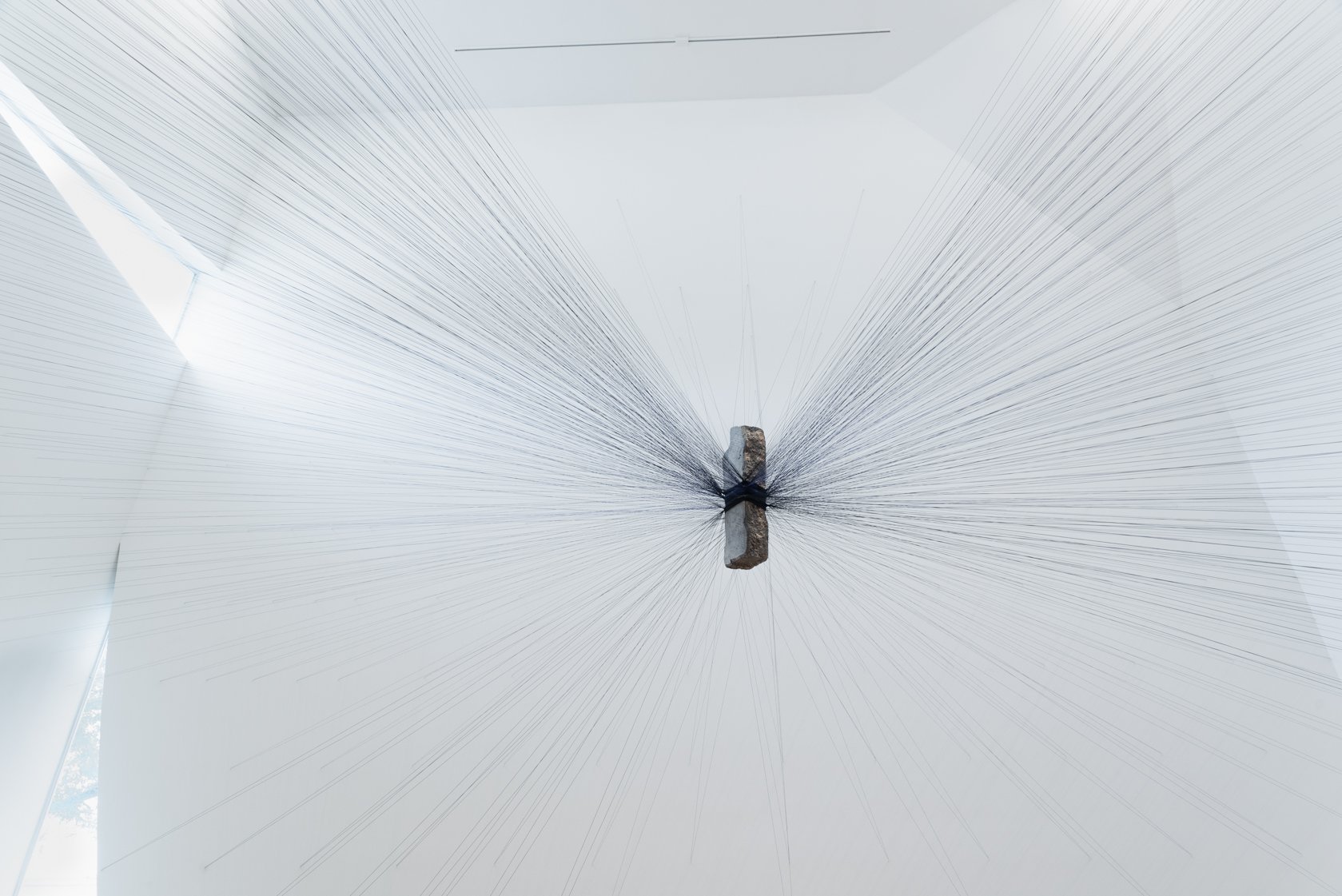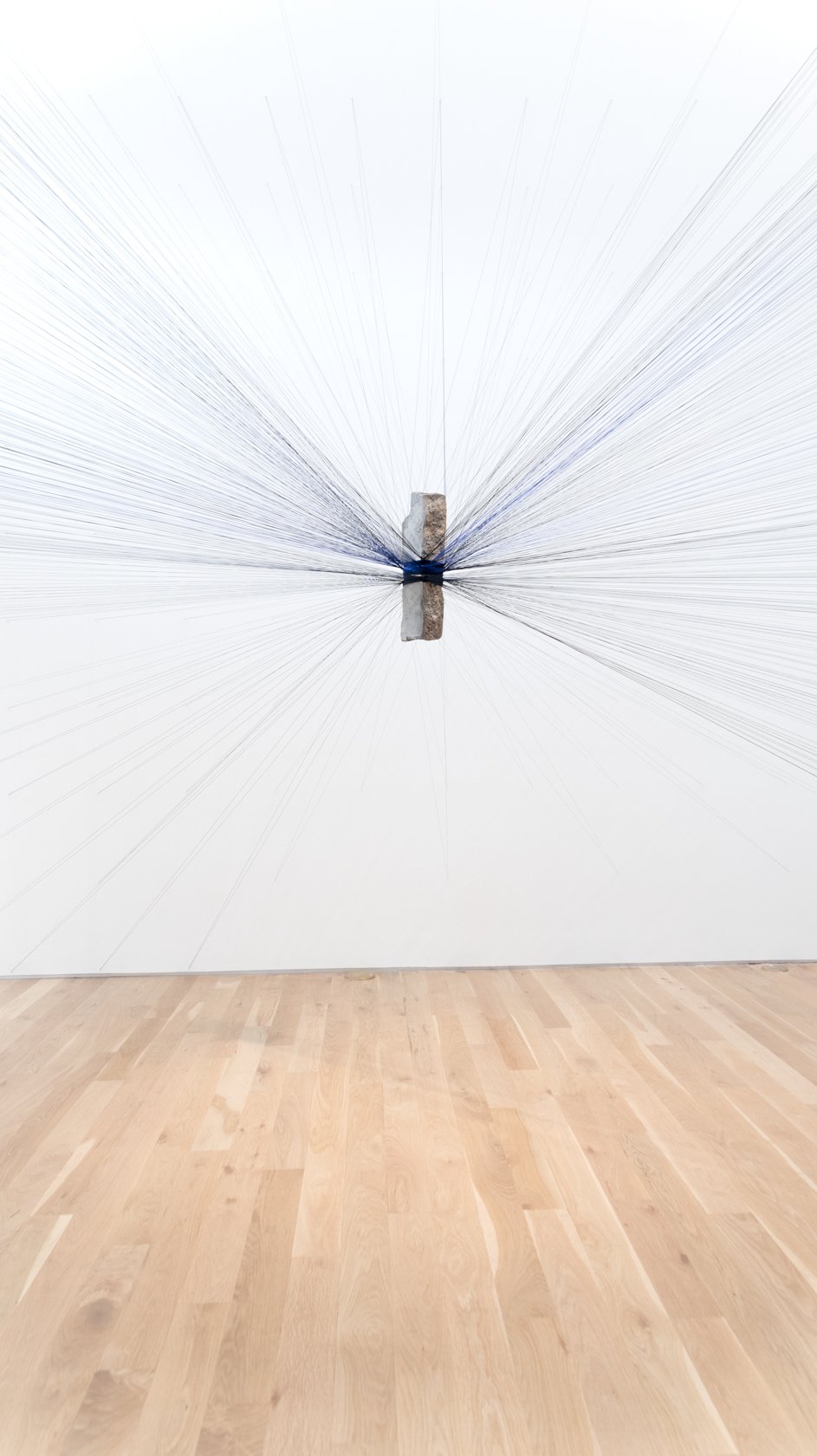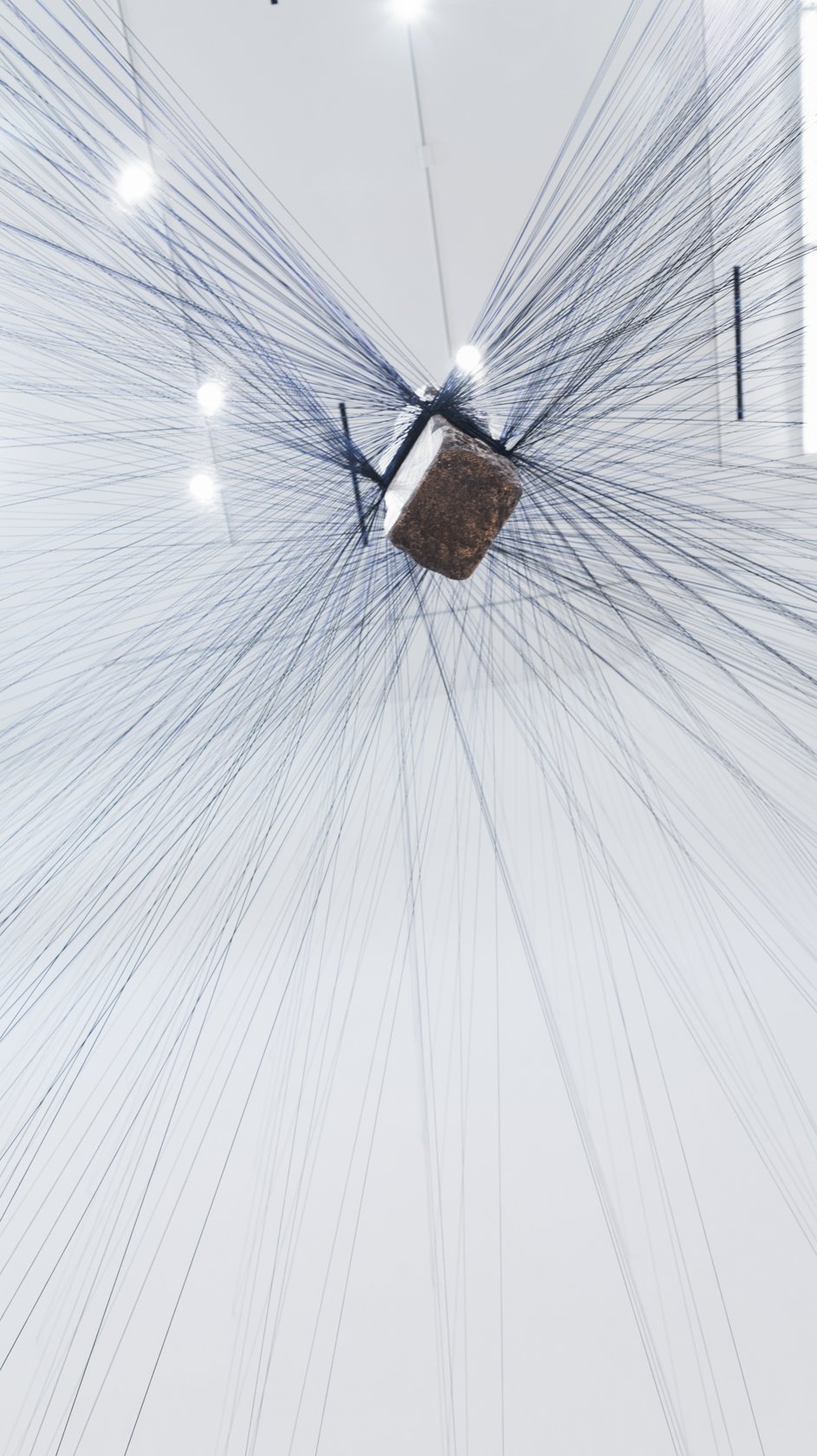MILTON BECERRA I KINETIC WEBS
THE TRANSART FOUNDATION FOR ART & ANTHROPOLOGY
cordially invites you to an opening of Milton Becerra´s
KINETIC WEBS
An exhibition curated by Mari Carmen Ramirez
April 14 to December 15, 2023
The Transart Foundation for Art and Anthropology, 1412 W Alabama St, Houston, TX 77006
This exhibit will be available for a private viewing by appointment only. Please contact Surpik Angelini at Surpik@mac.com
Photo by Beatriz Bellorín
MILTON BECERRA: BIOGRAPHICAL NOTES
Known as an early Conceptual artist and precursor of Land Art in Venezuela and Latin America, Milton Becerra was born in Colón, State of Táchira Venezuela and since 1980 he works and resides in Paris, France.
While Land Art in the United States combines contemplation and action- as in the work of Robert Smithson, Nancy Holt, Walter De Maria, Heizer, Gordon Matta Clark- in Latin America it aspires to transform reality as it faces problems of a historic, cultural, social, and political nature. Thus, Milton Becerra’s work deals, on the one hand, with a poetic reinterpretation of the cultural memory of an ancestral territory and on the other hand, a geometric and kinetic abstraction rooted in a radical interpretation of the Modernist movement by Venezuelan masters such as Carlos Cruz Diez and Jesus Rafael Soto with whom Becerra worked as a technical assistant in their studios.
From 1972 on, Milton Becerra worked with the concept of the continuum, creating continuous rhythmic patterns as in the series of Hexagonometrias drawings shown in our present exhibition, while also transmuting the solid presence of an object charged with ancestral symbolism -such as a megalith, a meteorite, a boulder or a rock- into something fragile and light, as we can appreciate in his spatial installation of a web of nylon threads holding a solid stone from a local quarry, in Transart’s gallery space.
After the nineties, Milton Becerra’s work implies fieldwork, research and coexistence with native communities from which several specific projects have emerged. Anthropological elements ground such projects where a type of poetry that is definitely current reminisces and evokes, without being nostalgic.
*These bioiographical notes were based on “Milton Becerra-A Territory of Natural Geometry” by Santiago B. Olmo (pp17-23 in Milton Becerra’s catalog published by Fundacion Chacao, Caracas, Venezuela 2007)
Video by Beatriz Bellorín
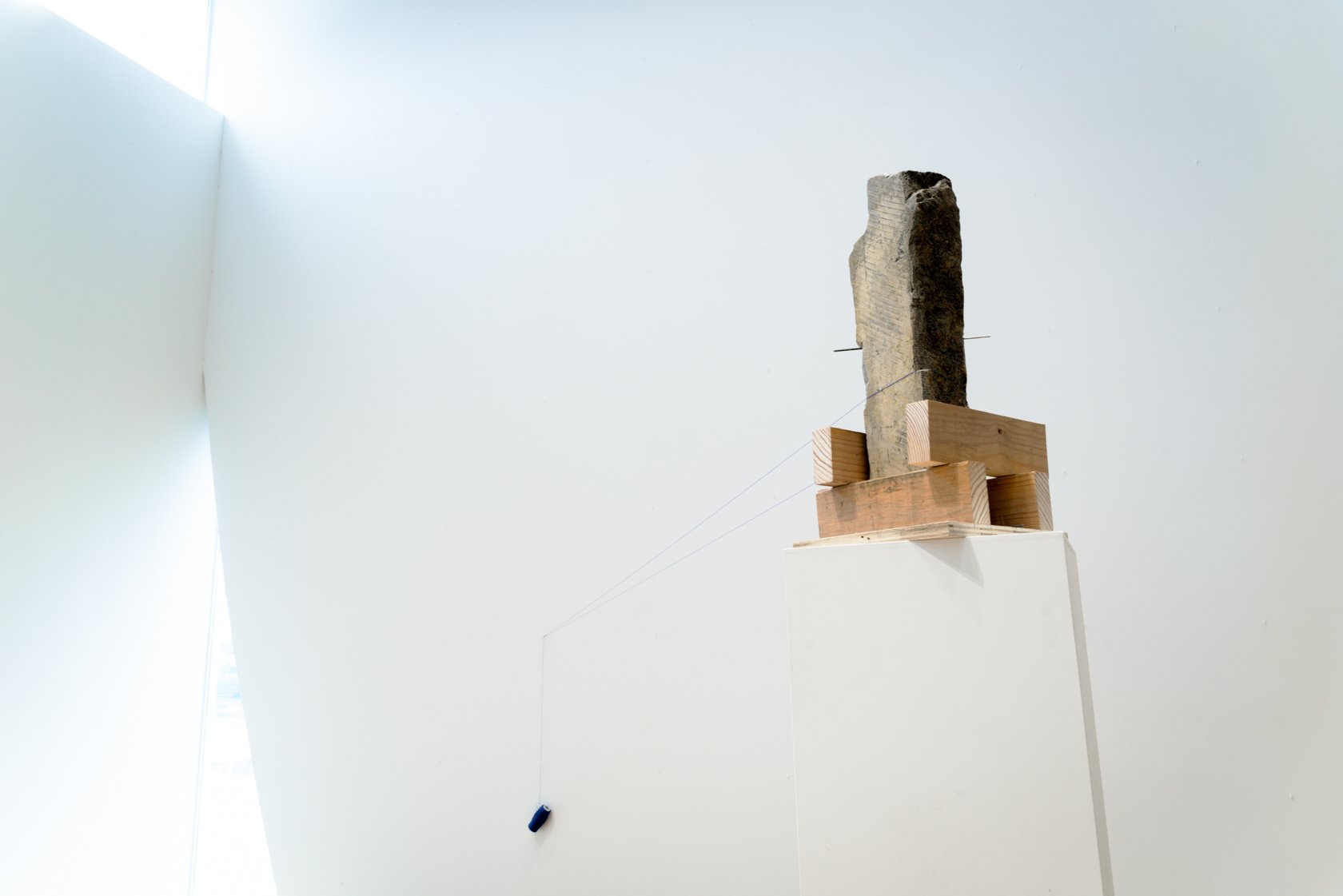
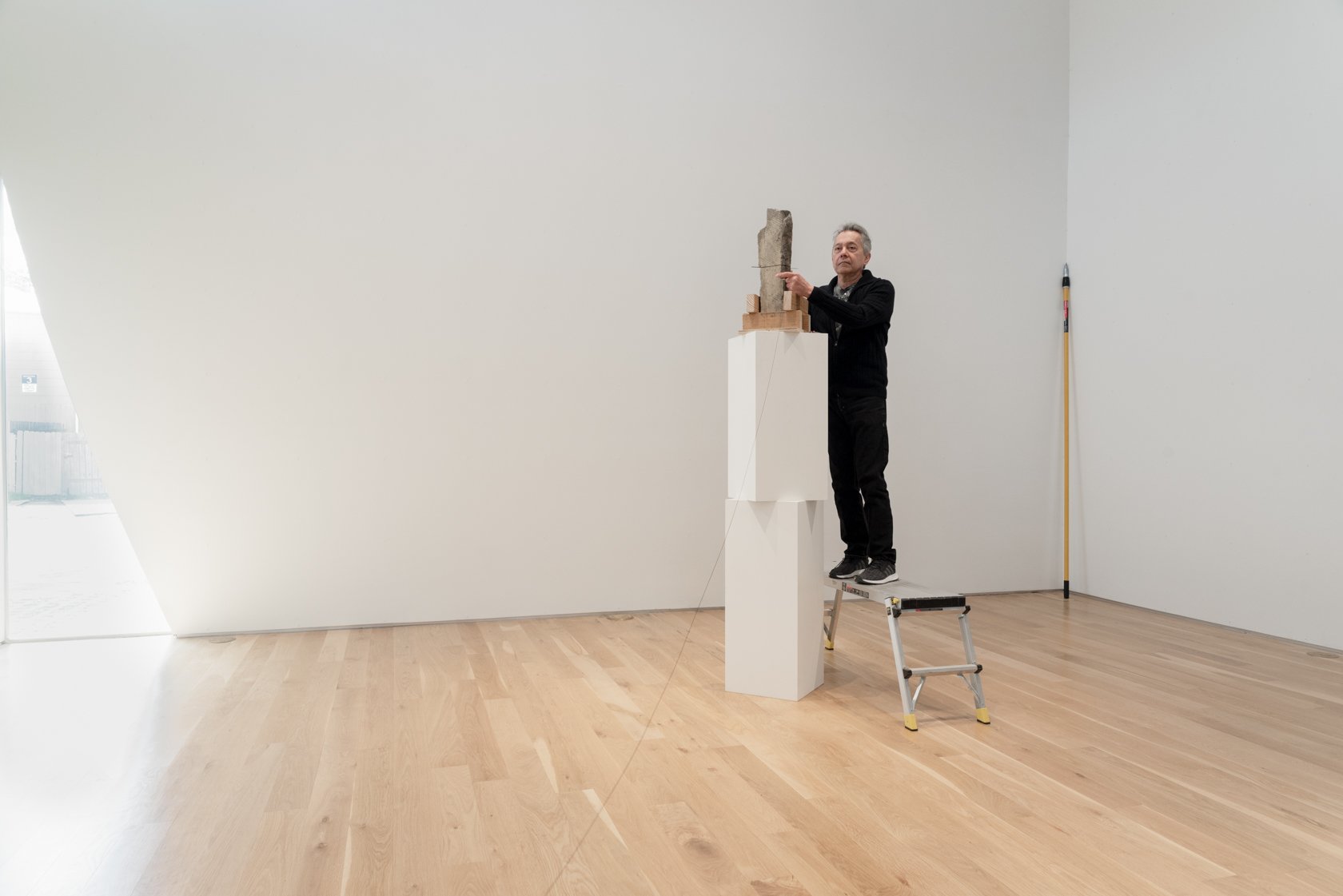
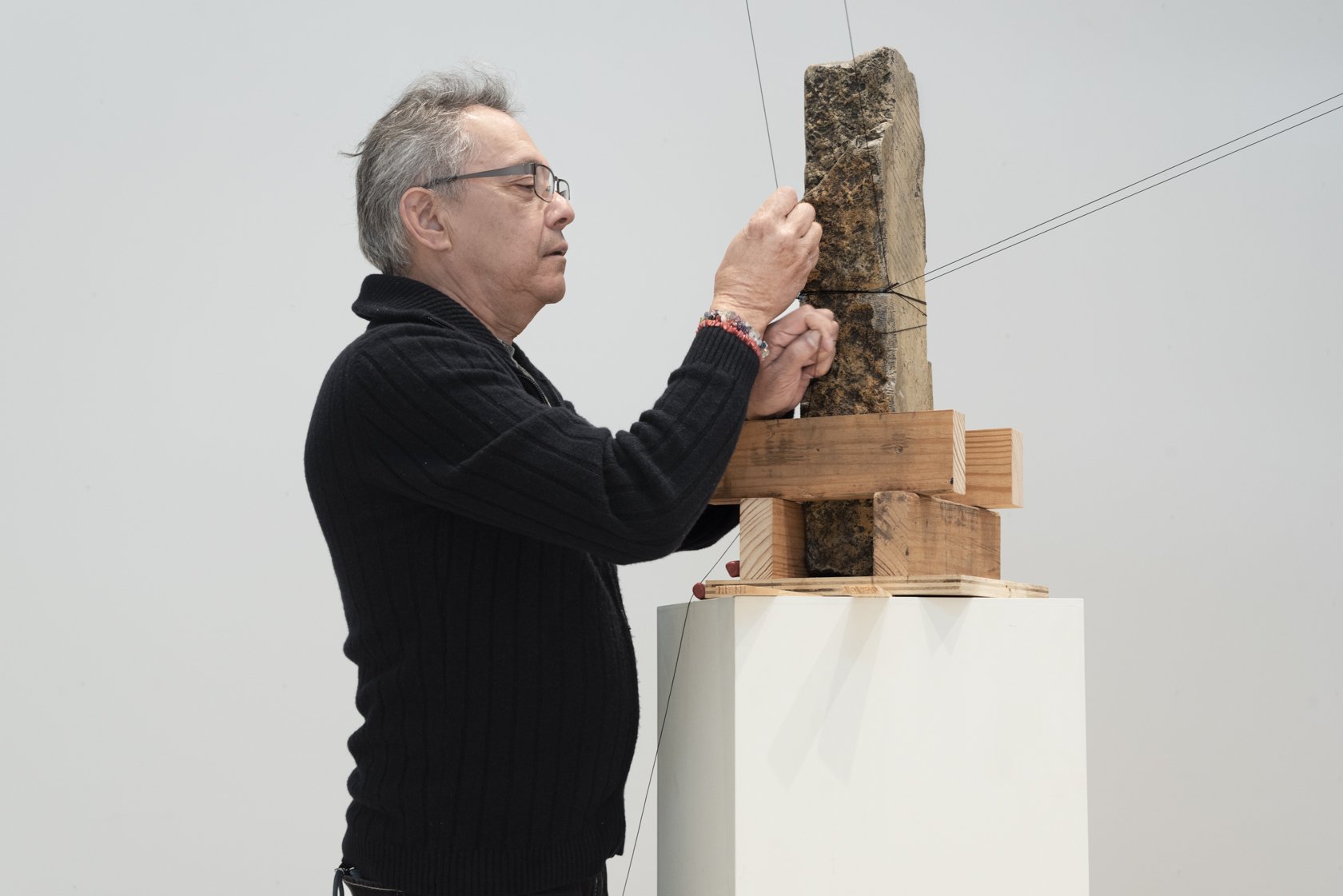
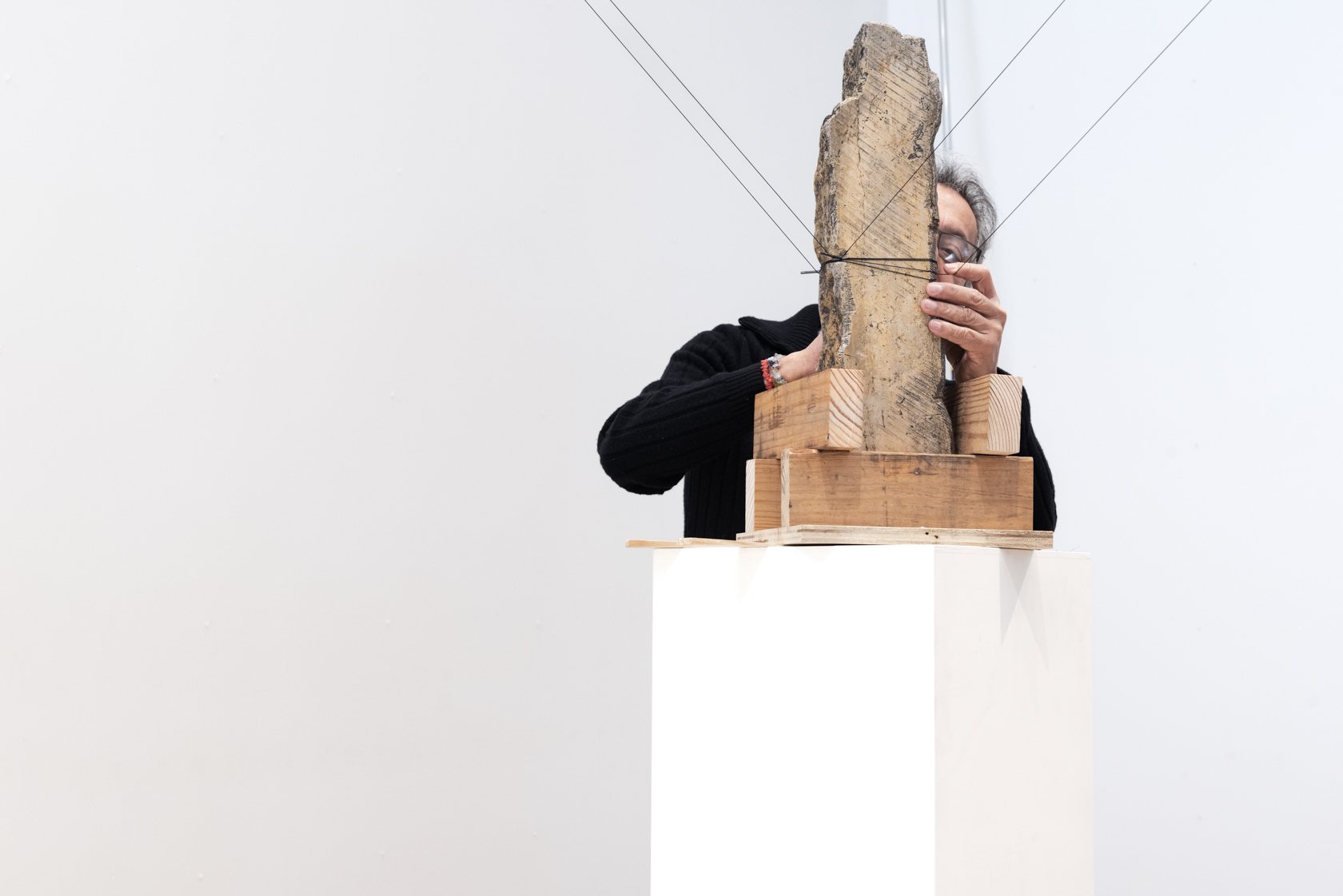

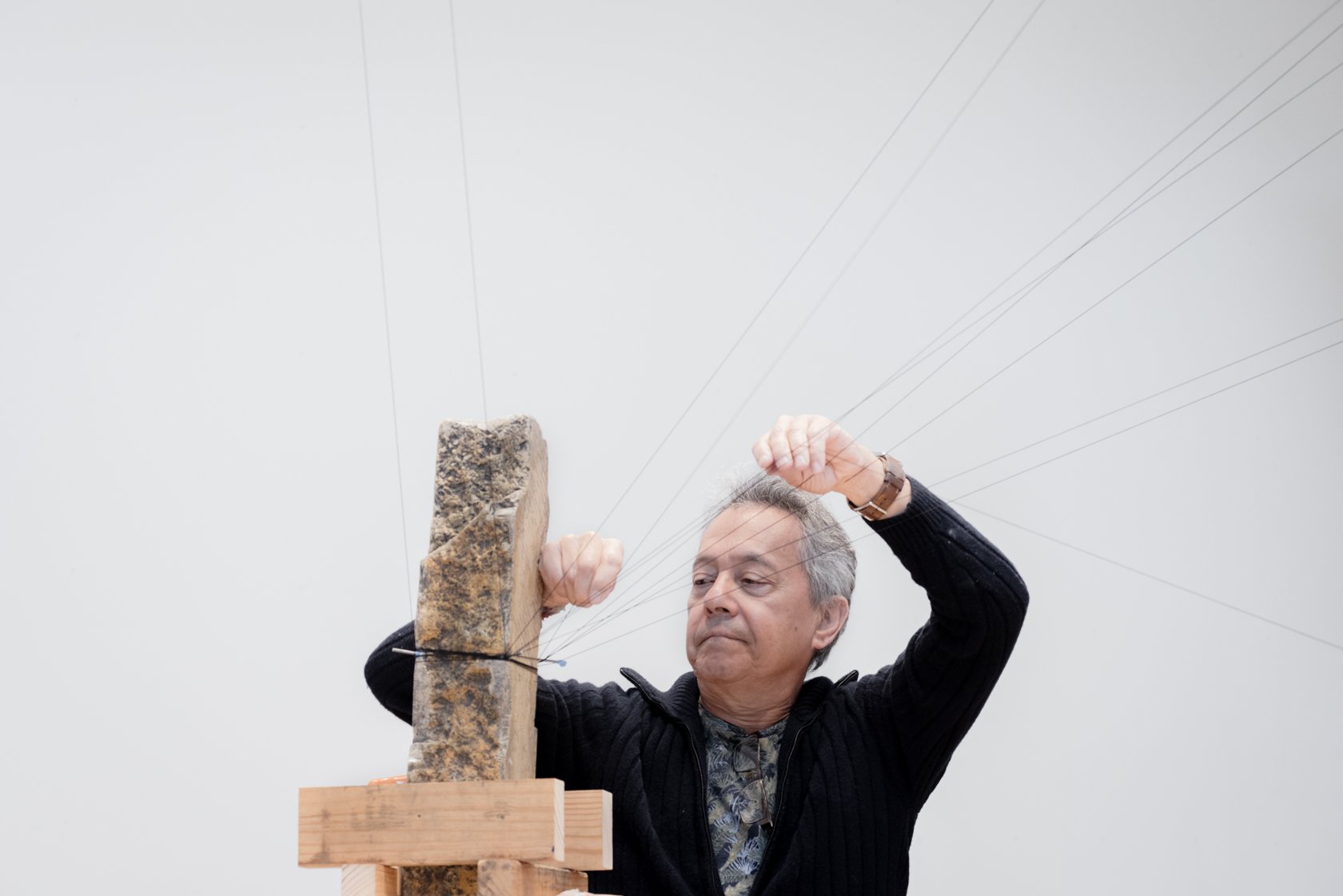



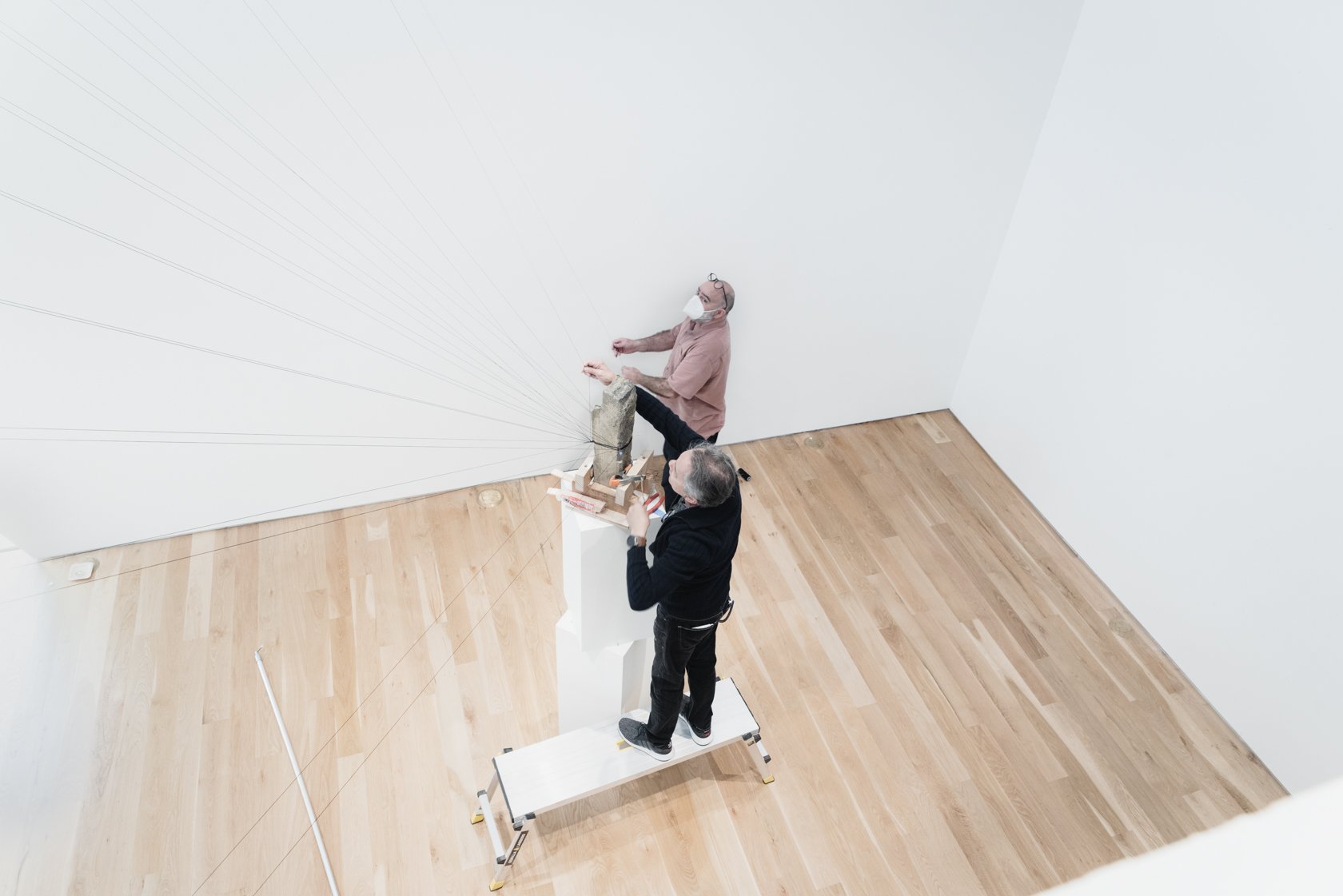

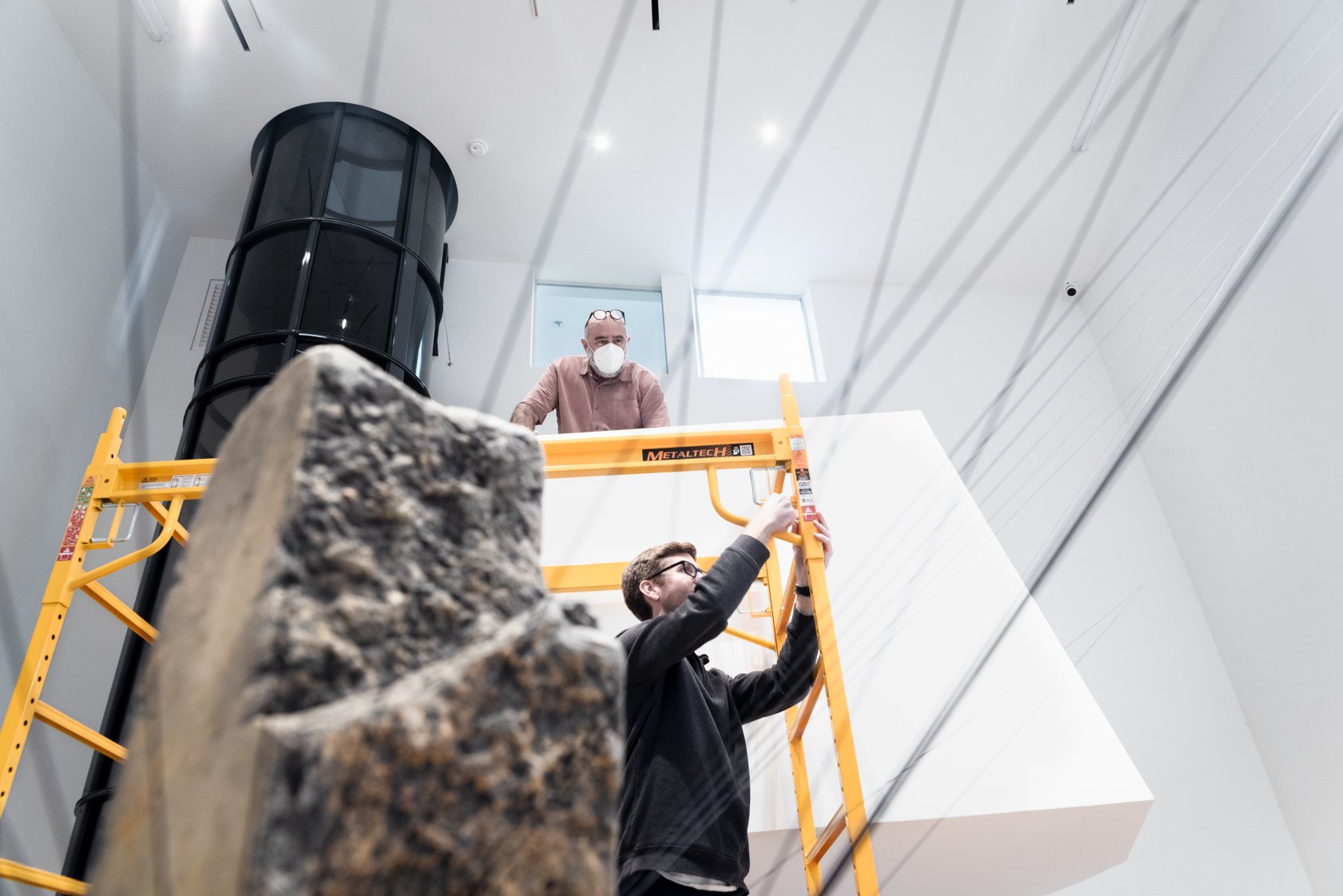
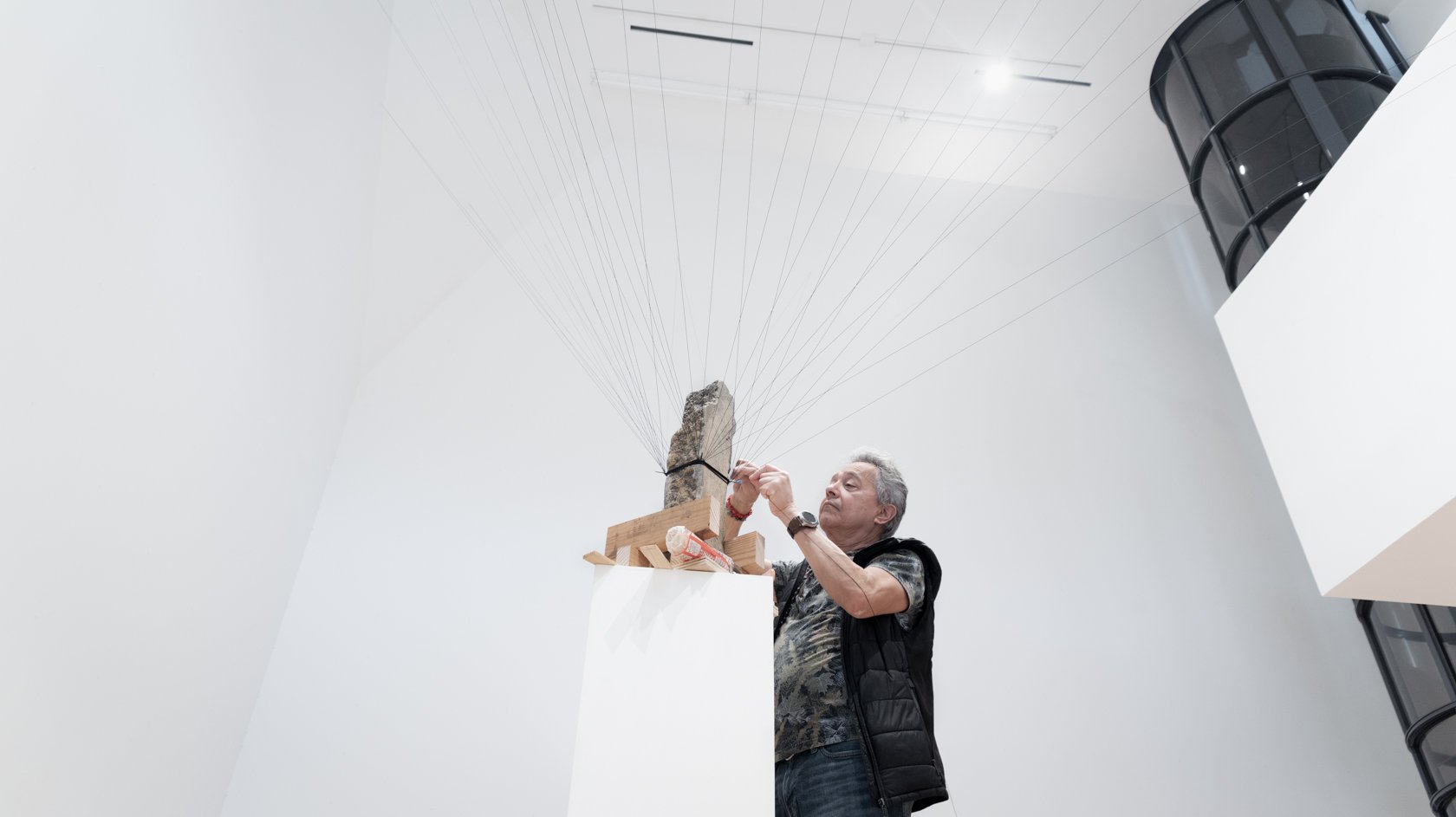
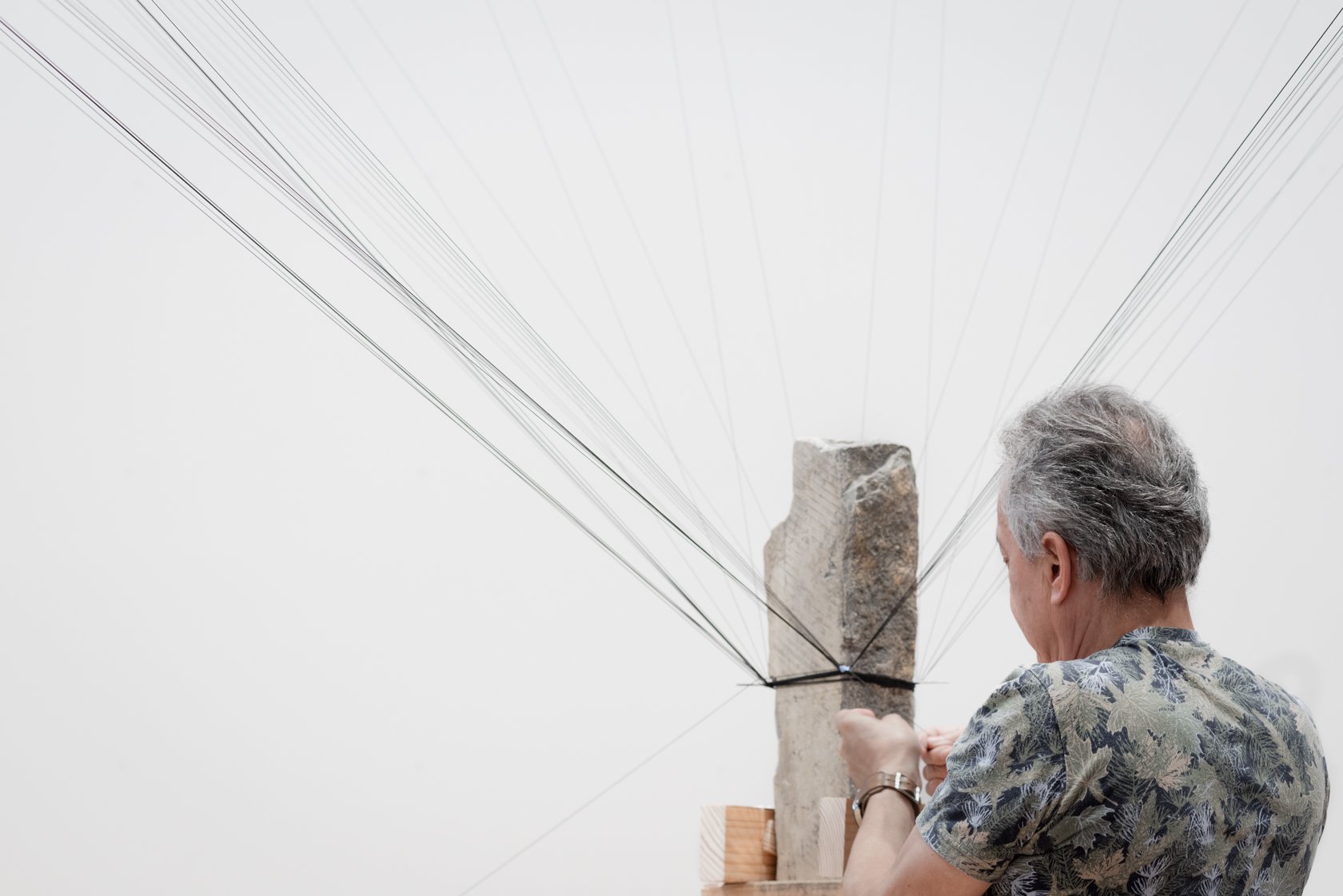
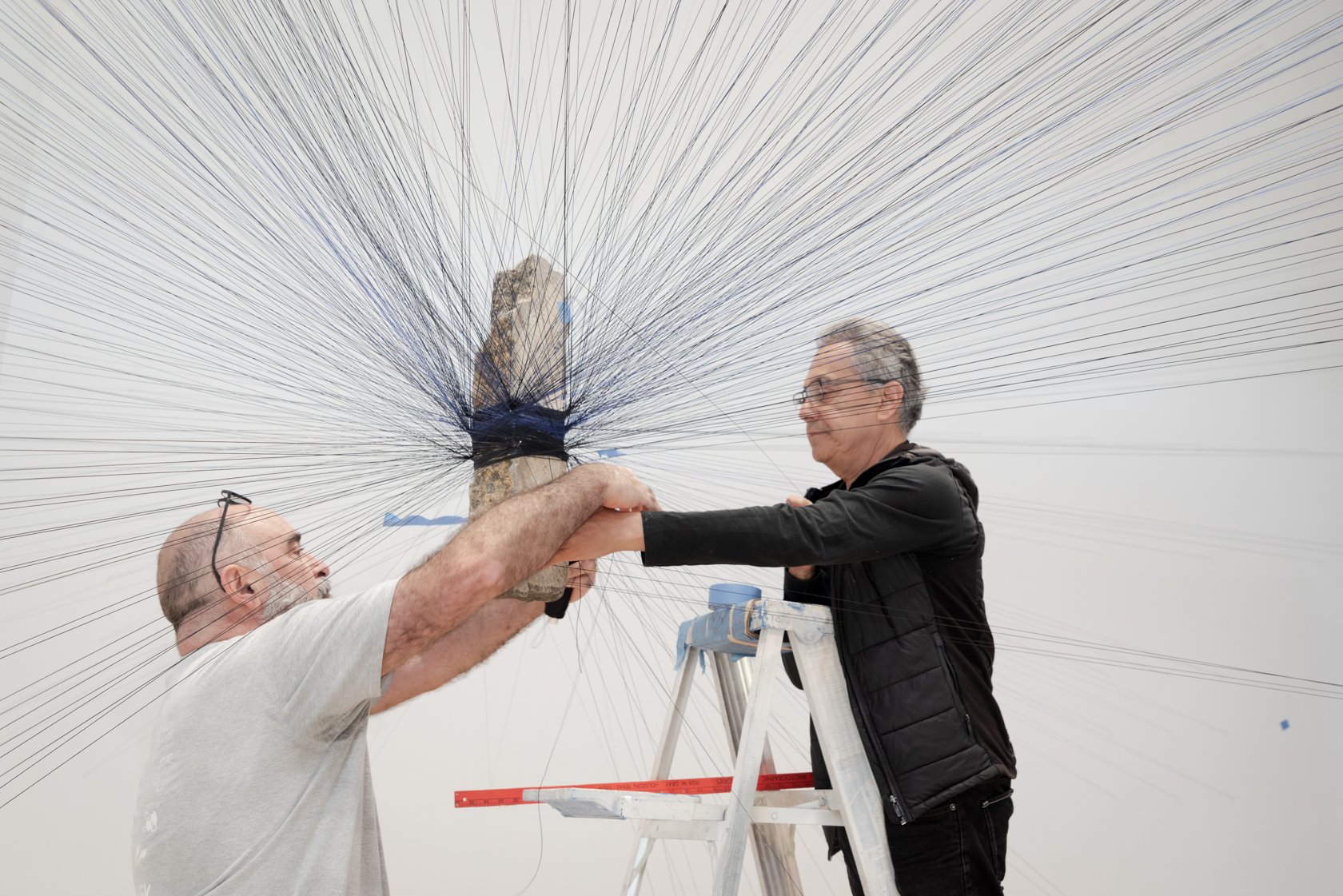
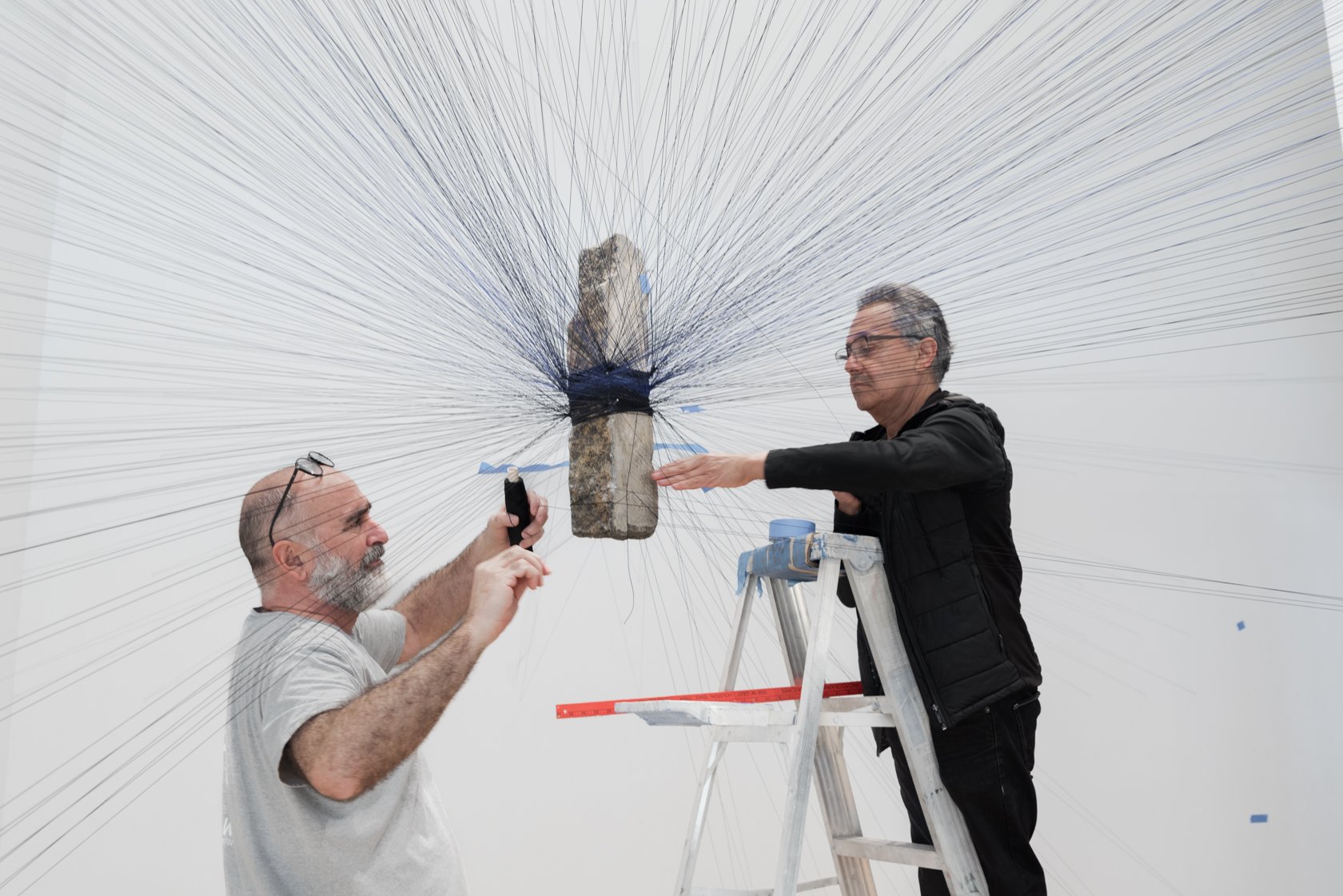
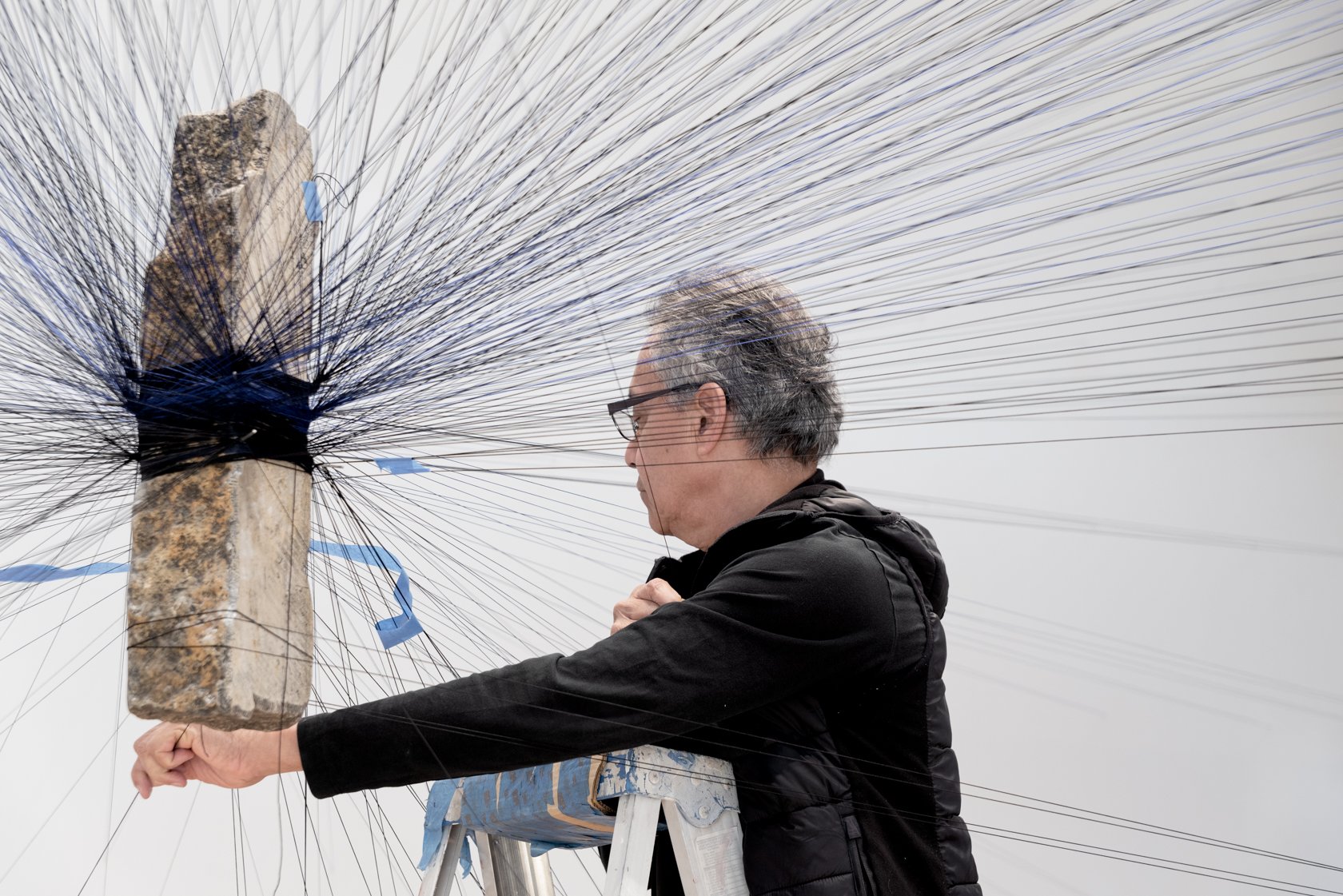
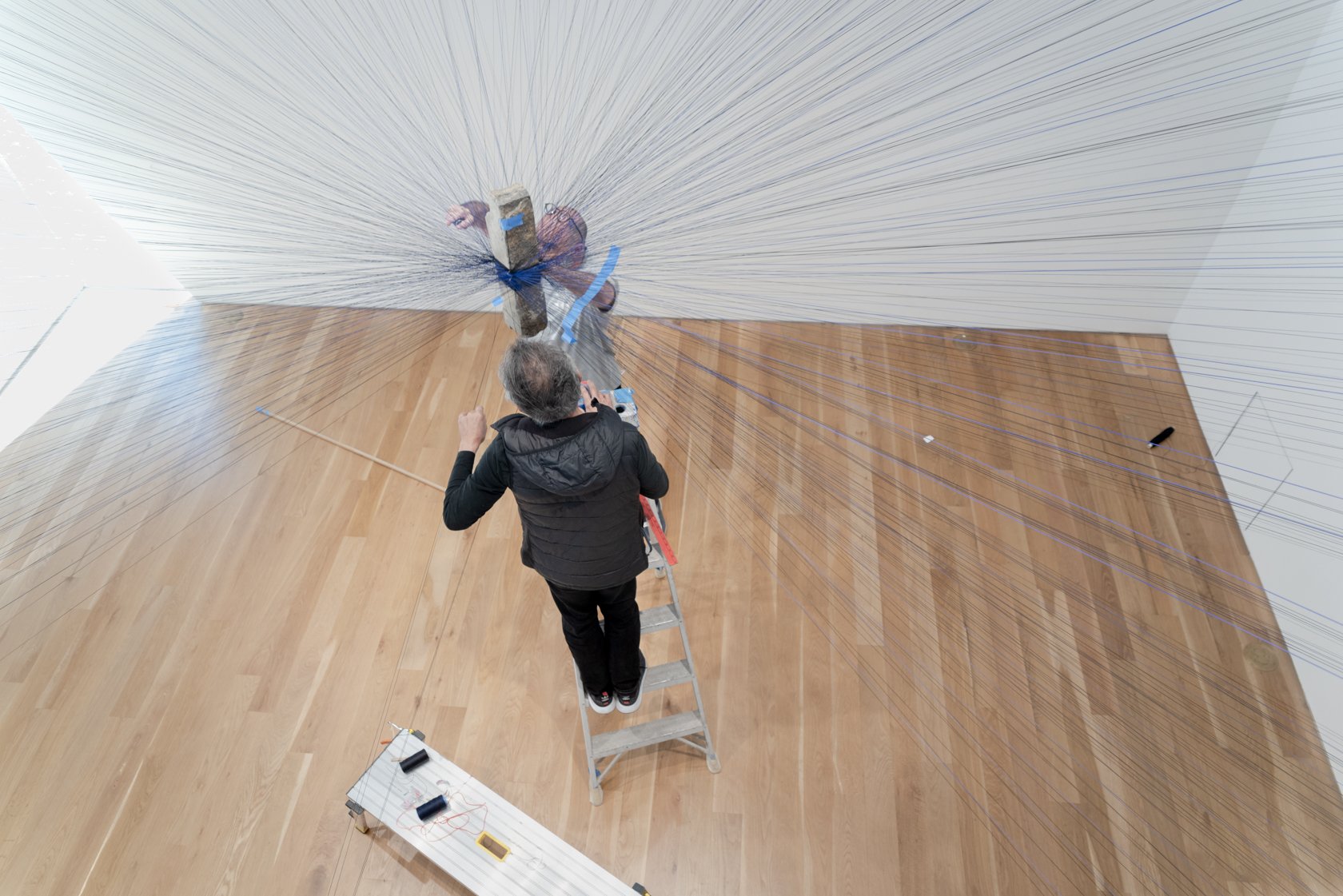
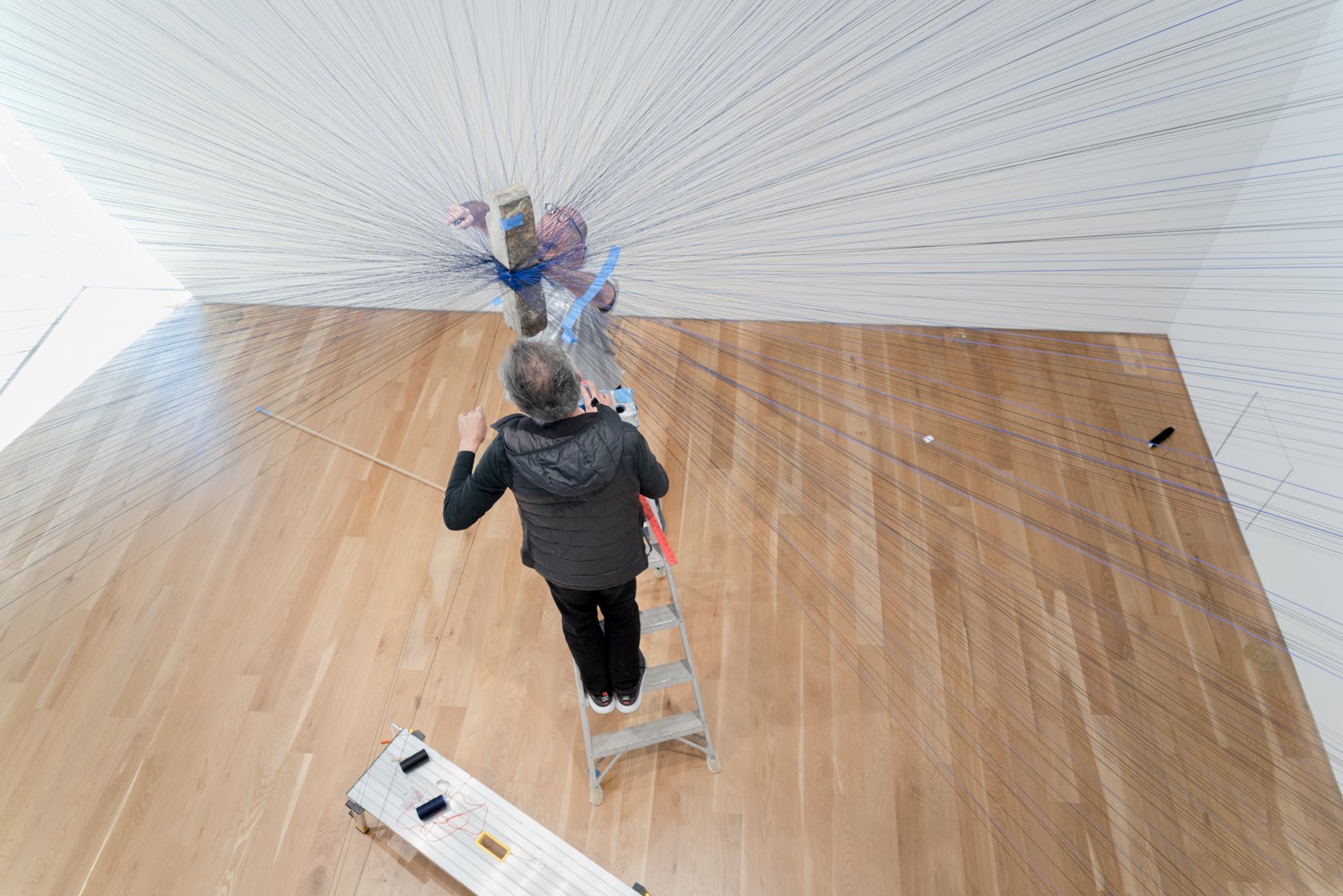

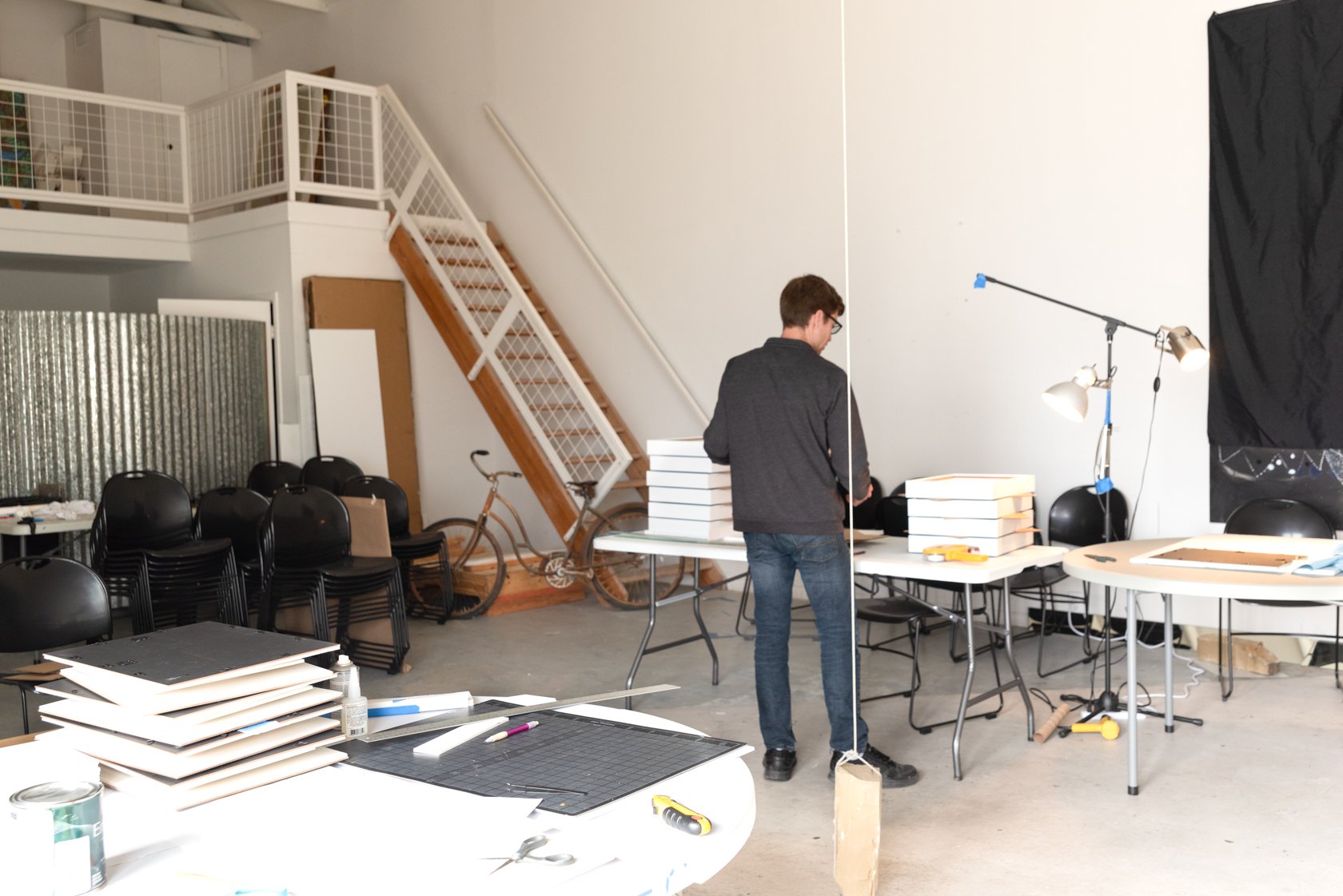
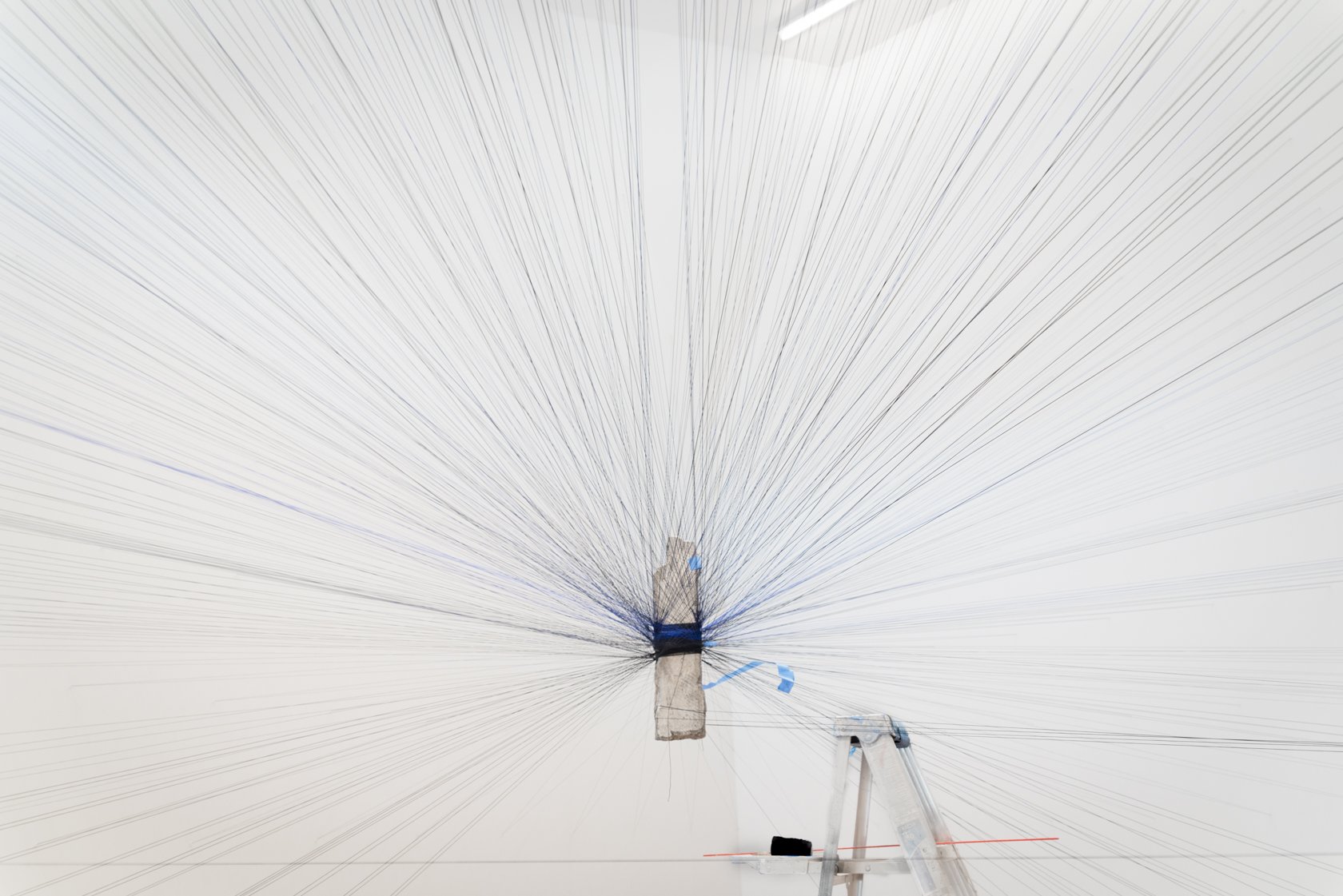
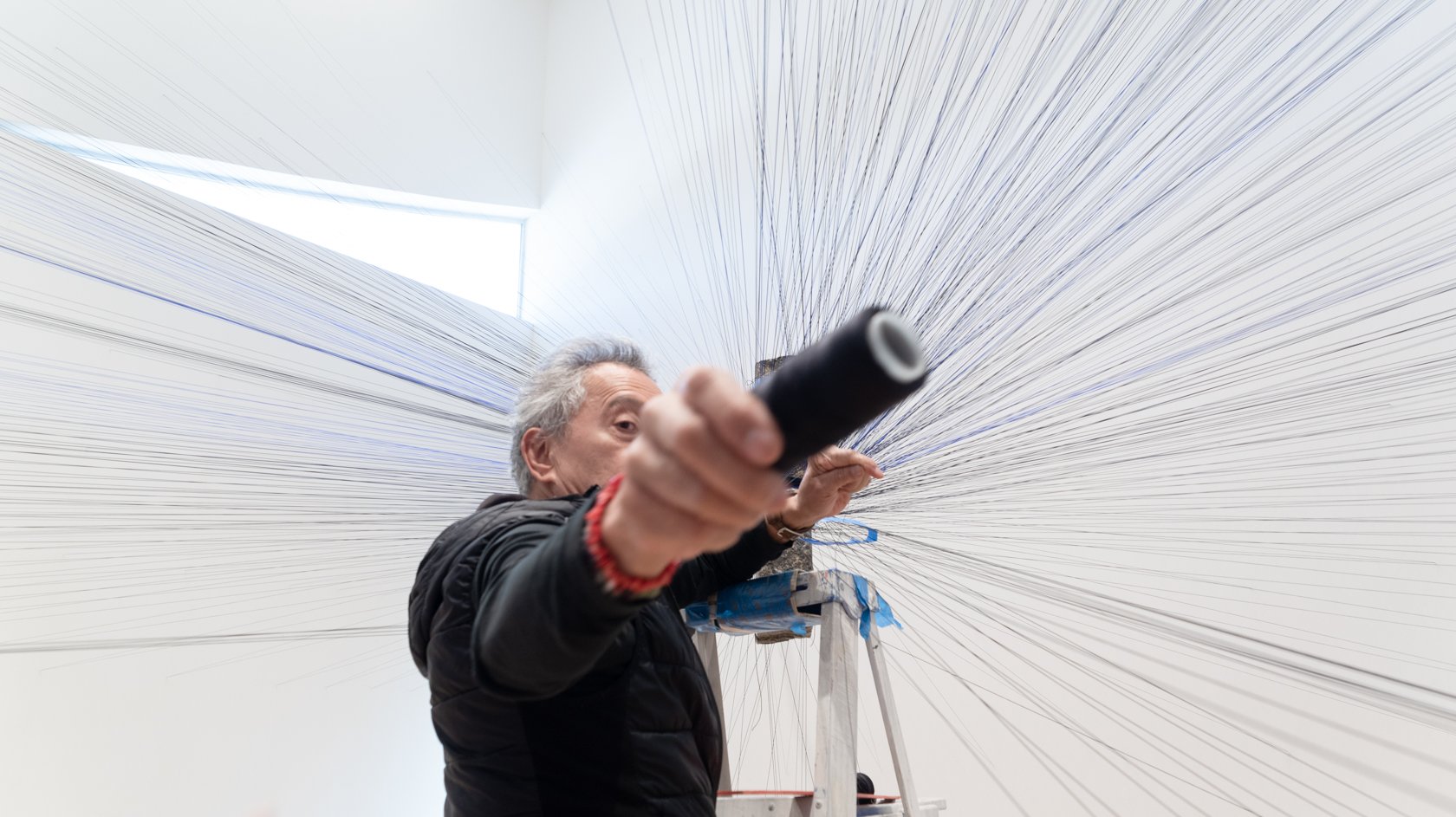
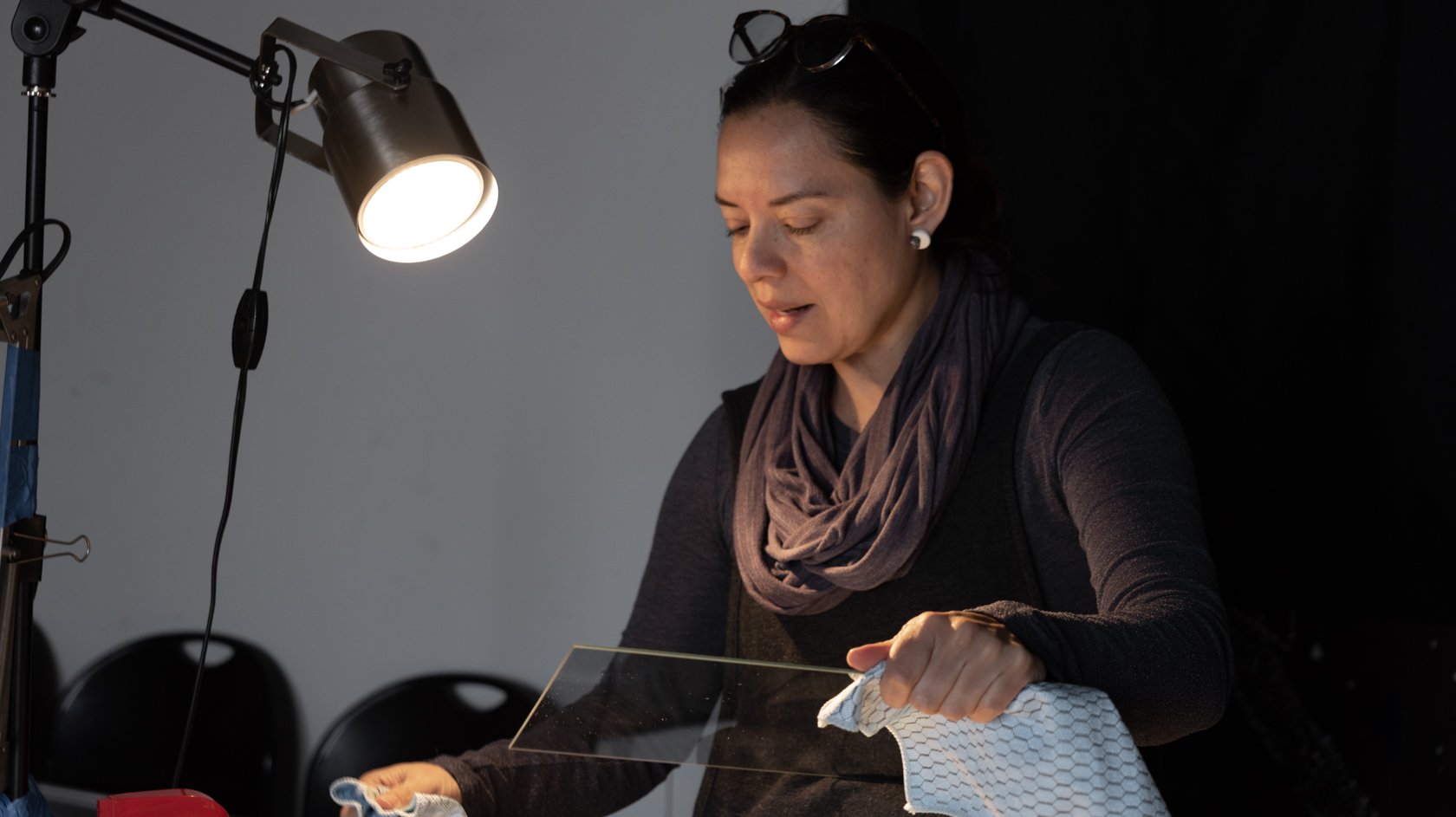
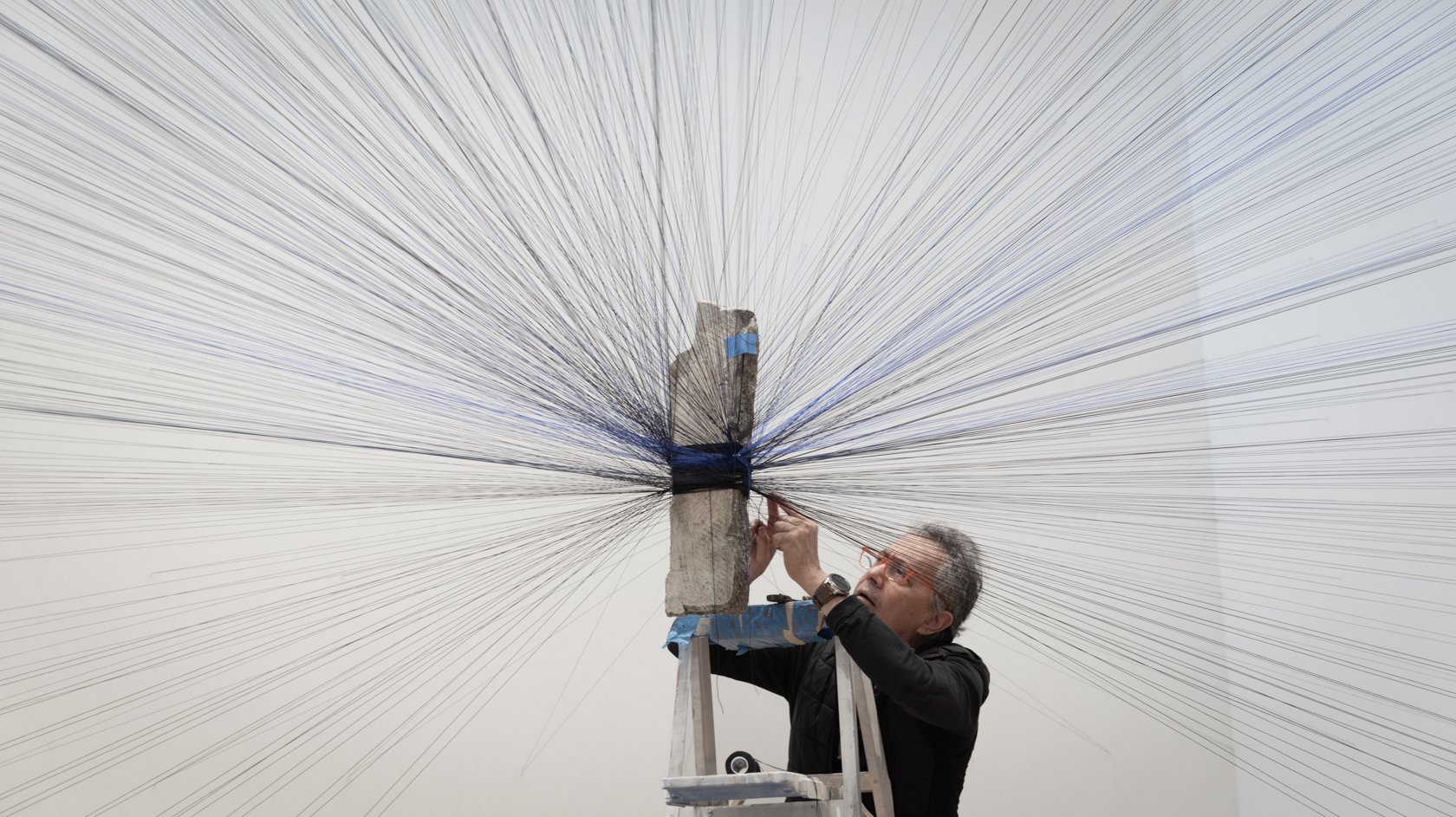
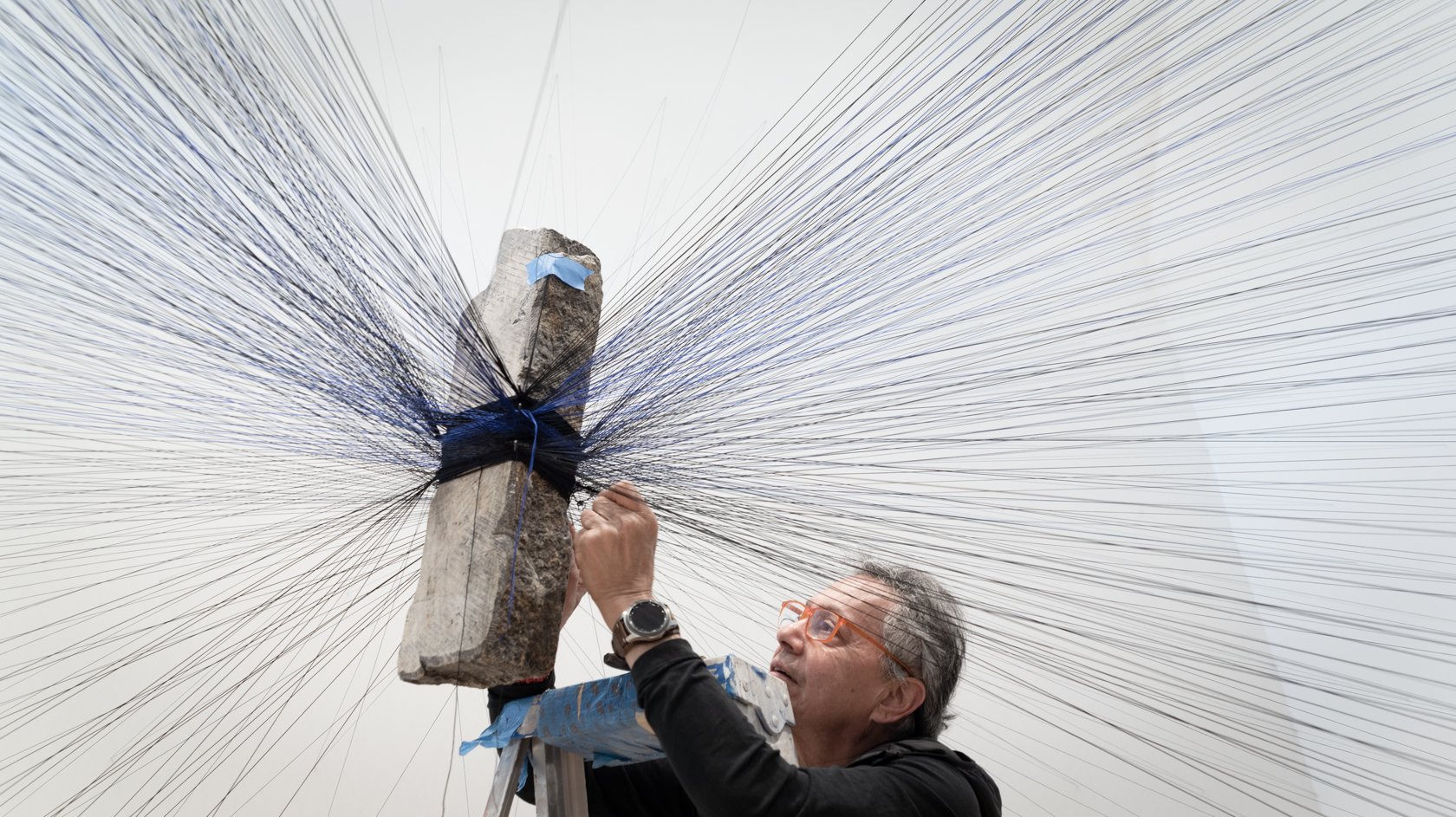
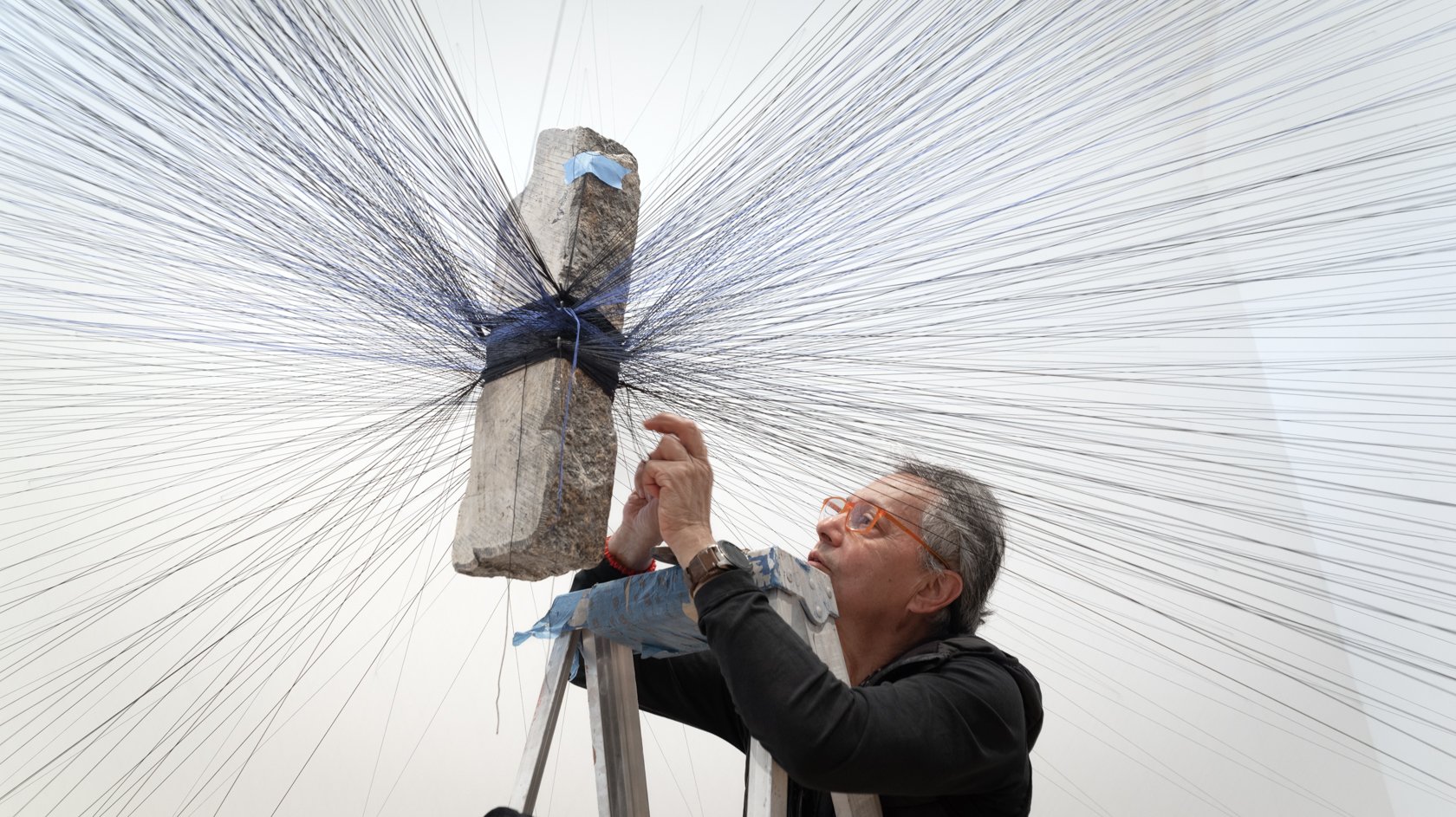
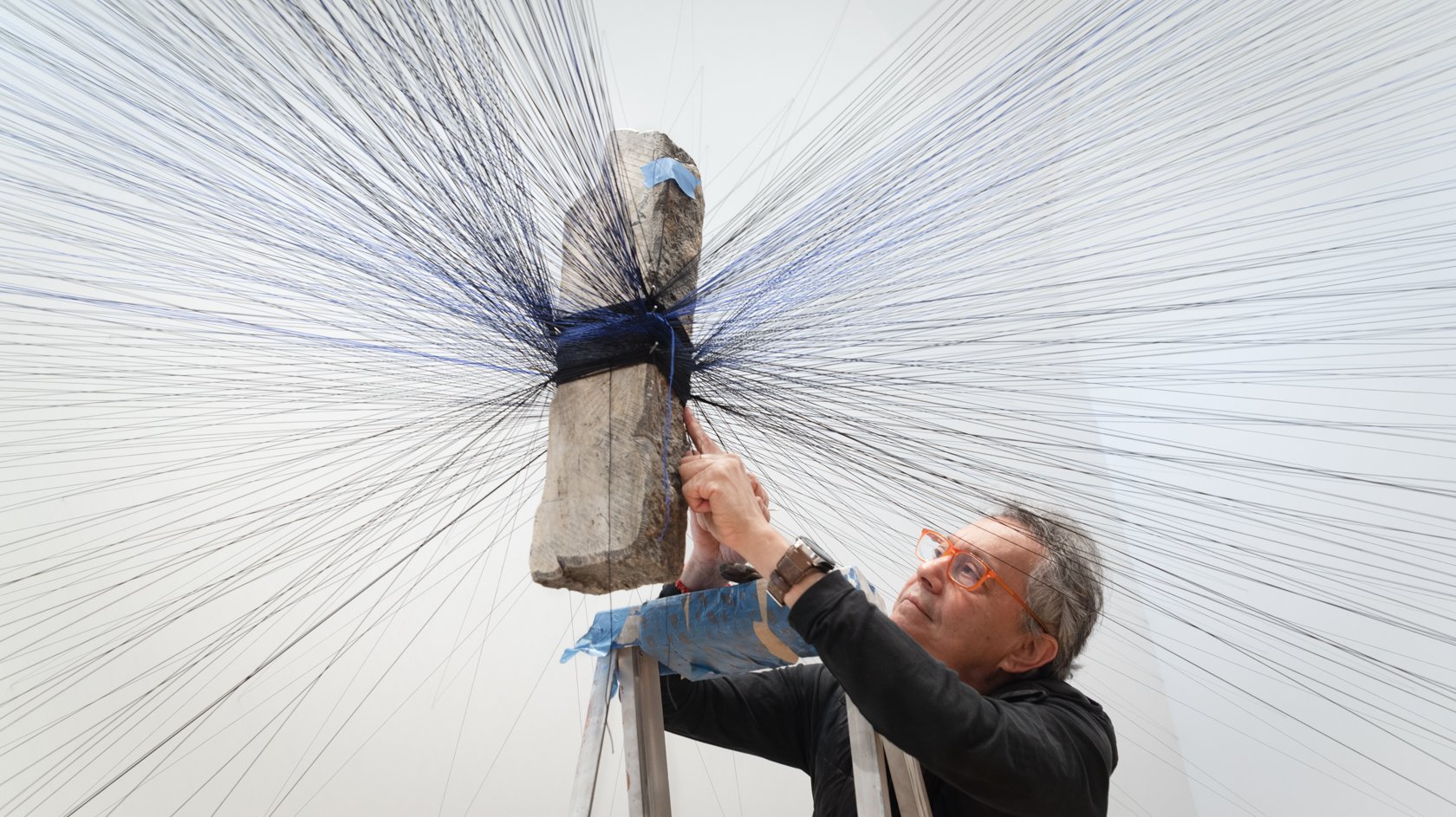
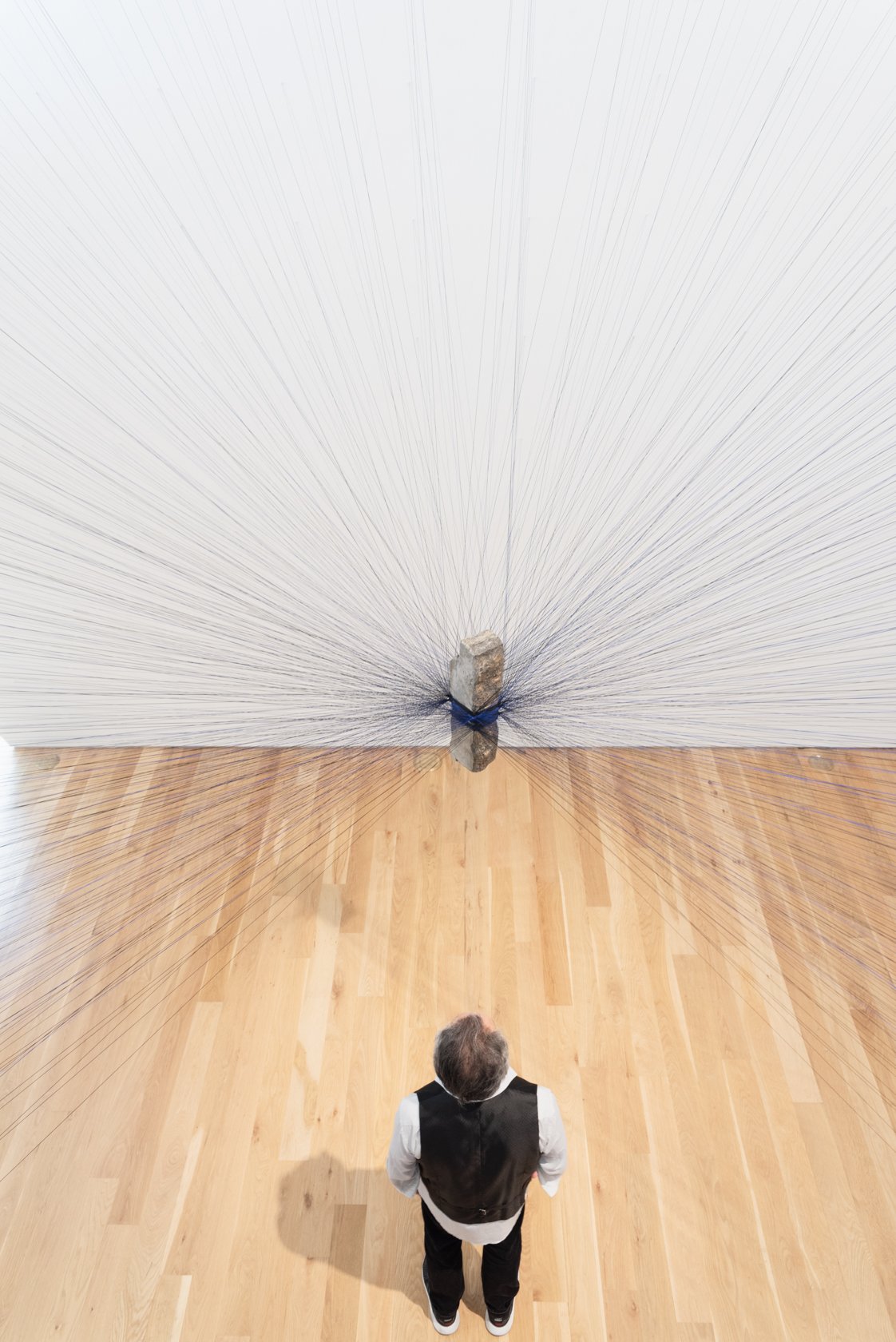
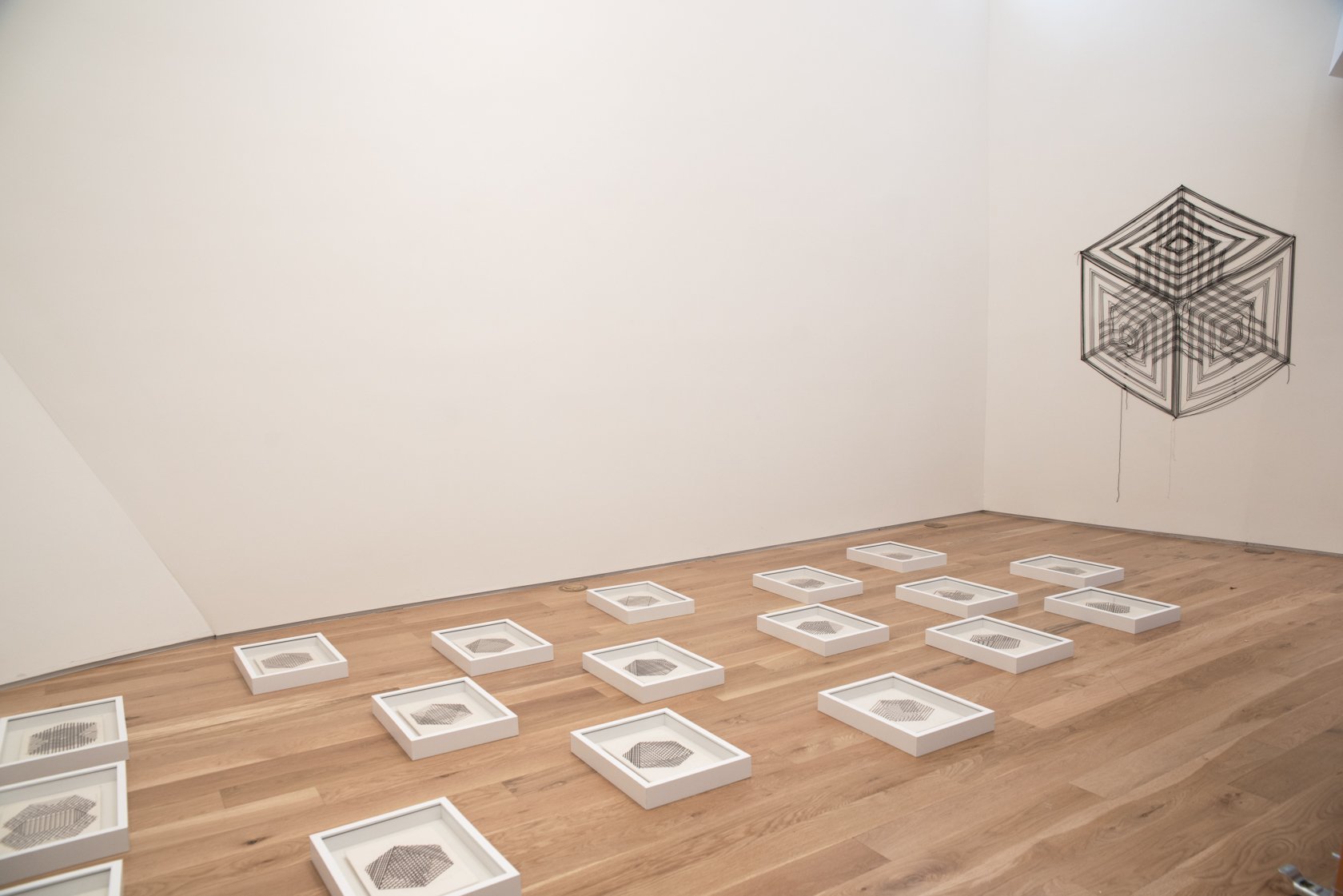

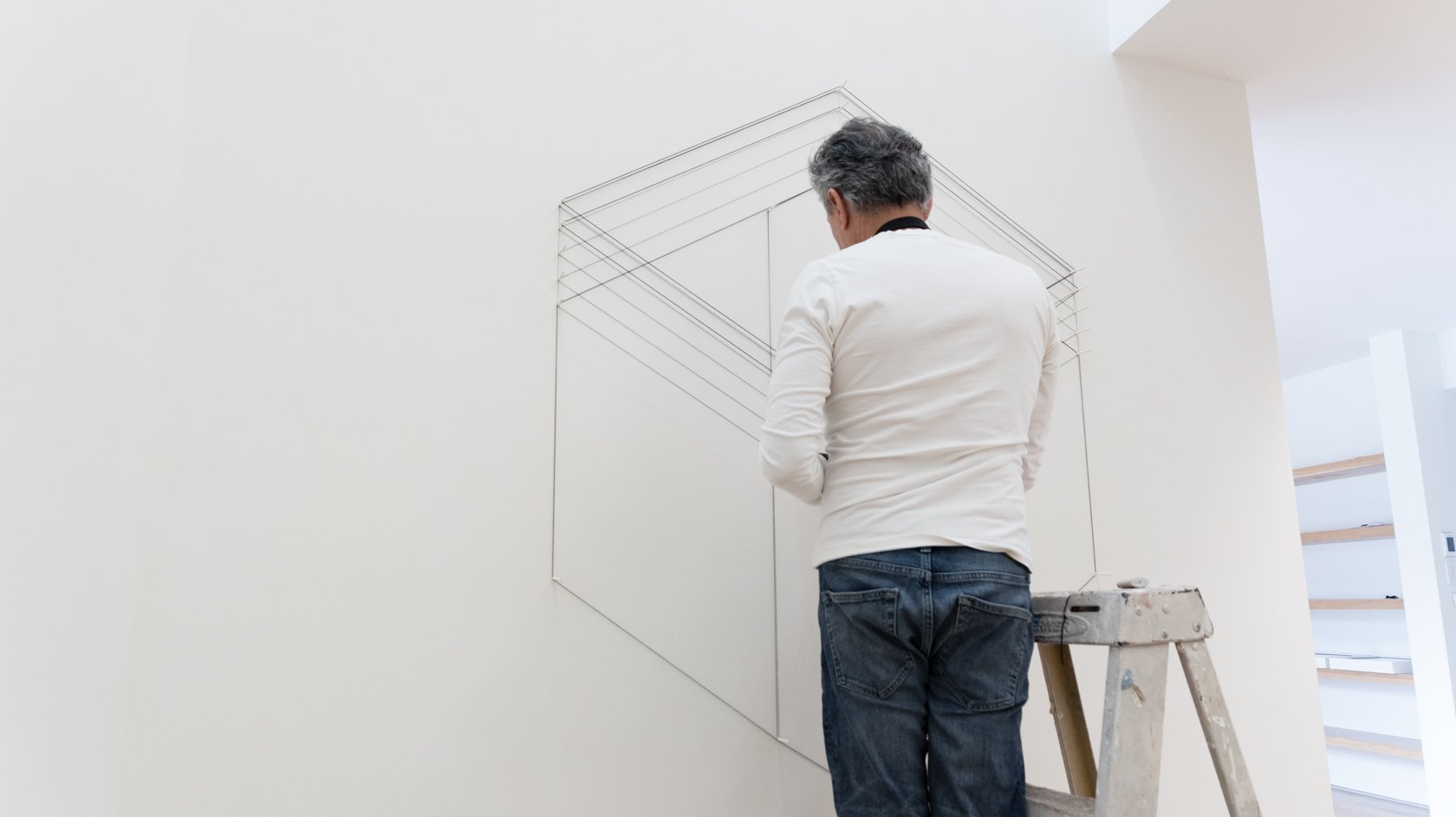
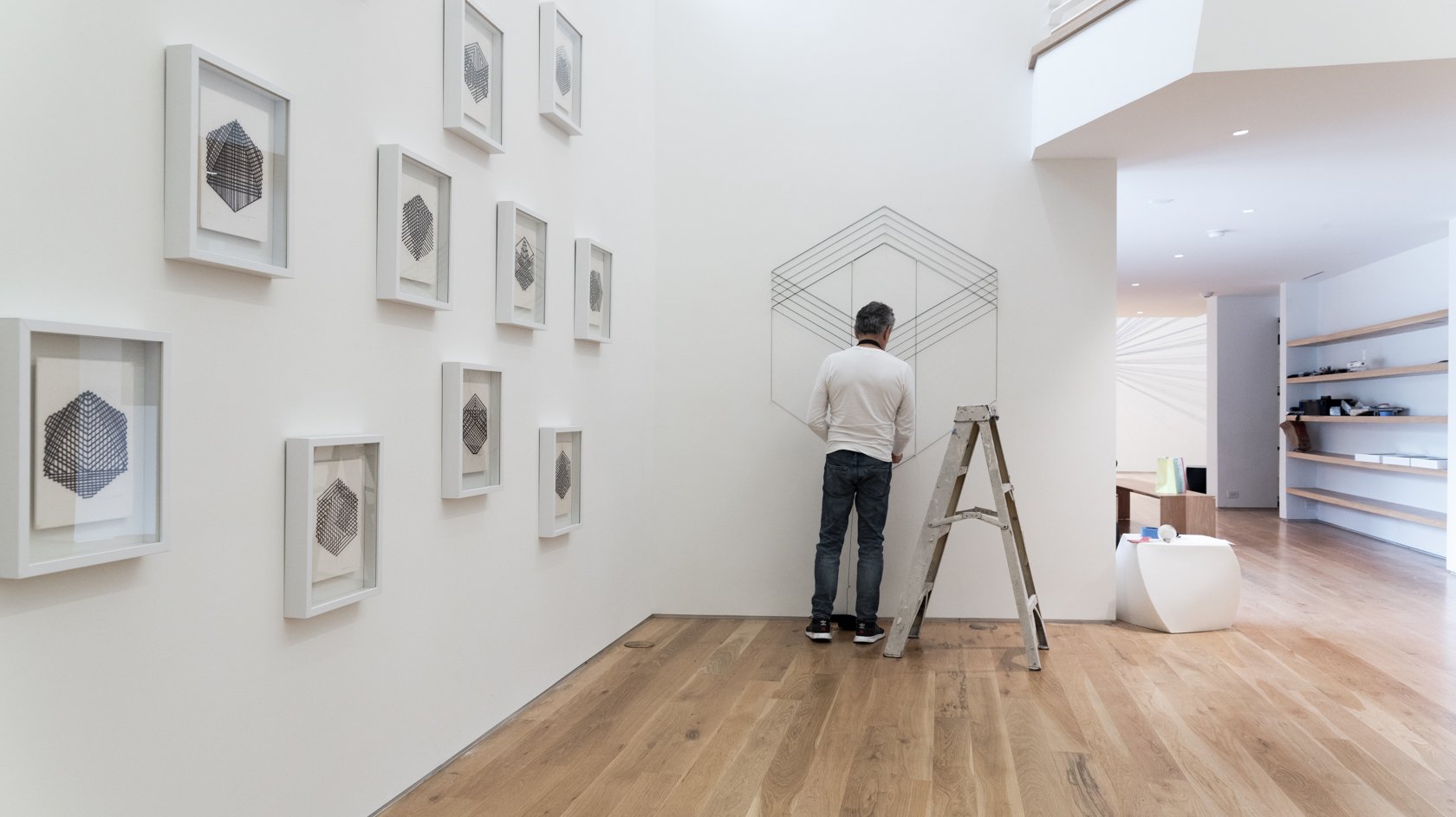
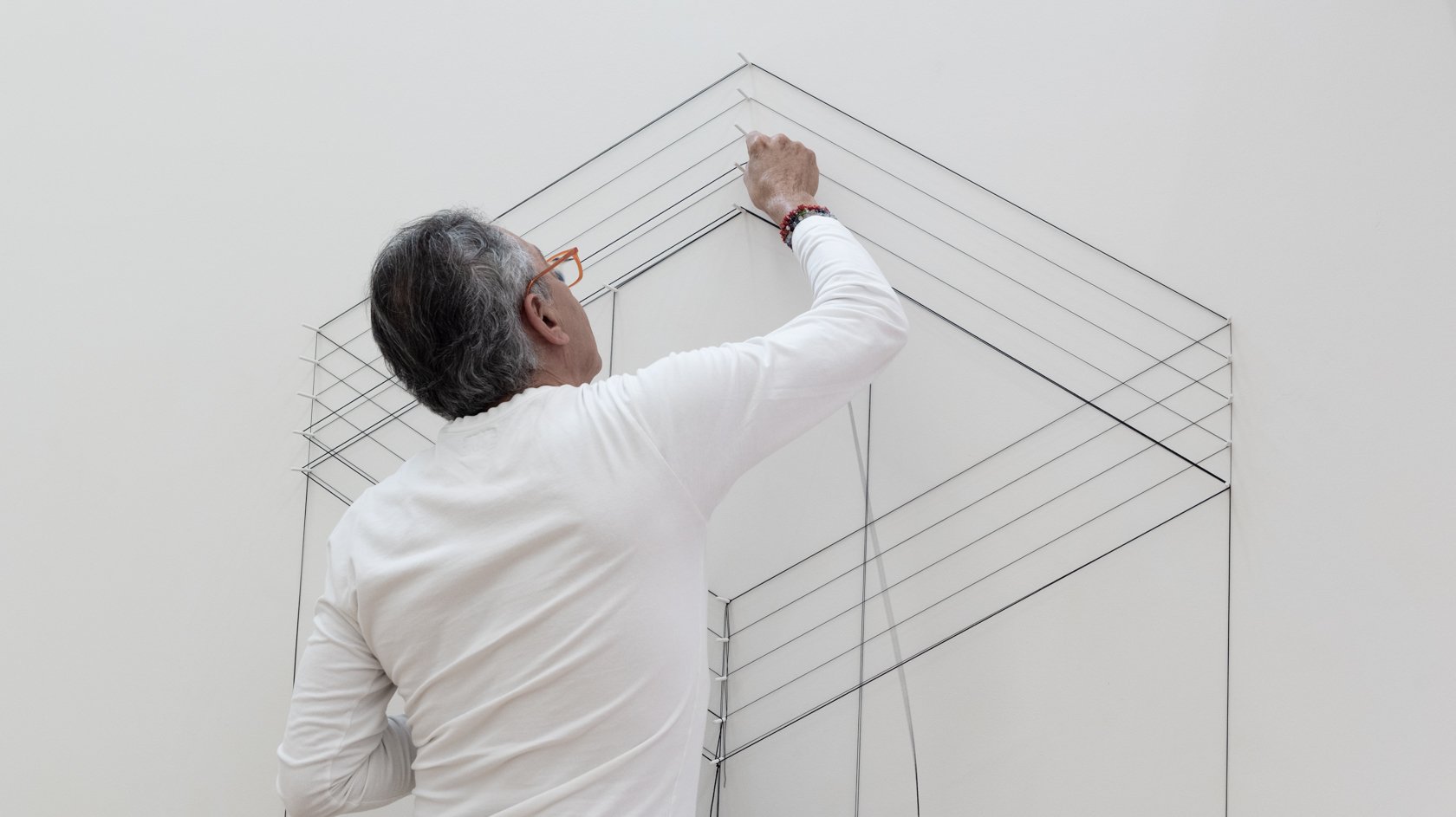
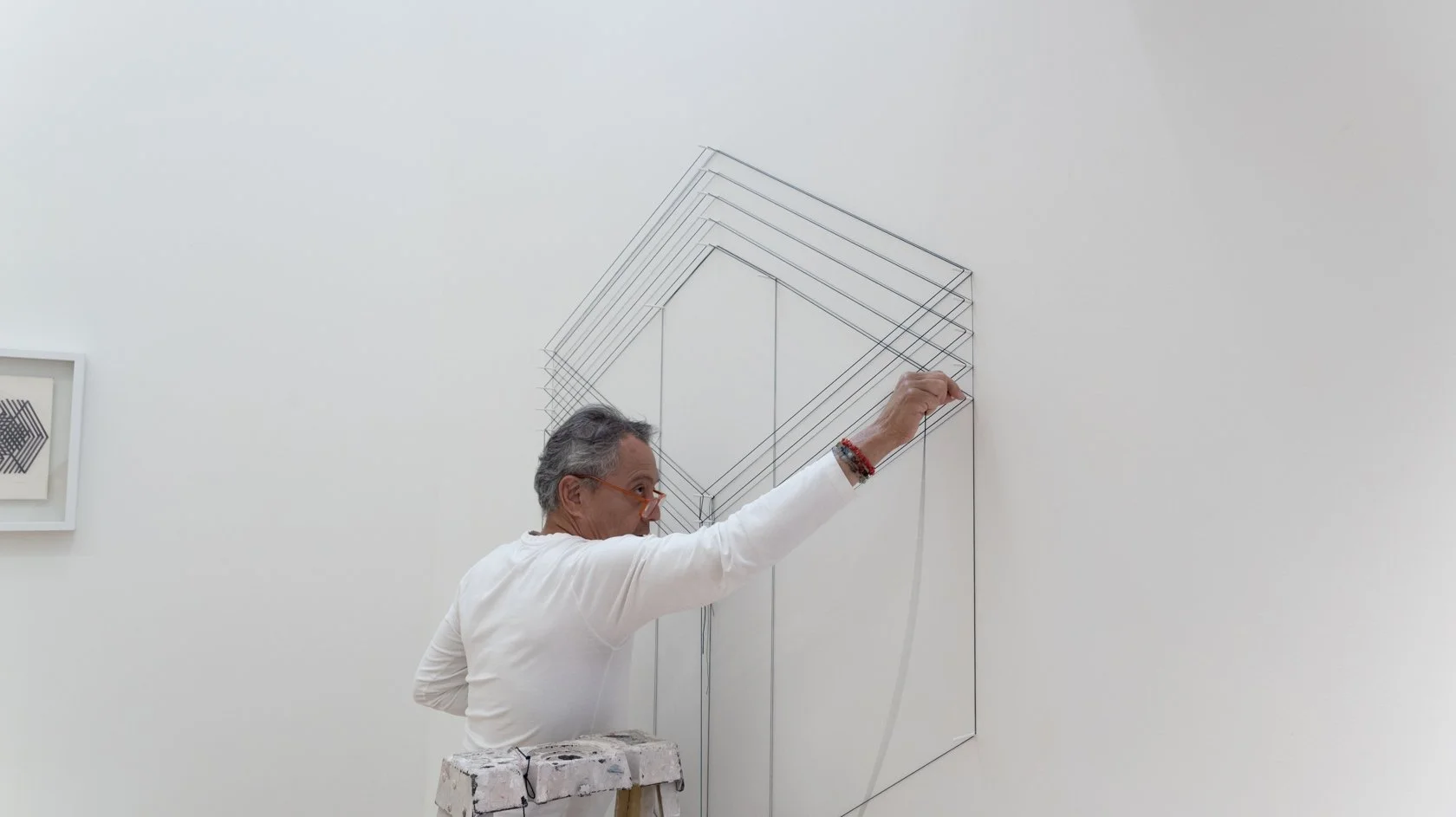
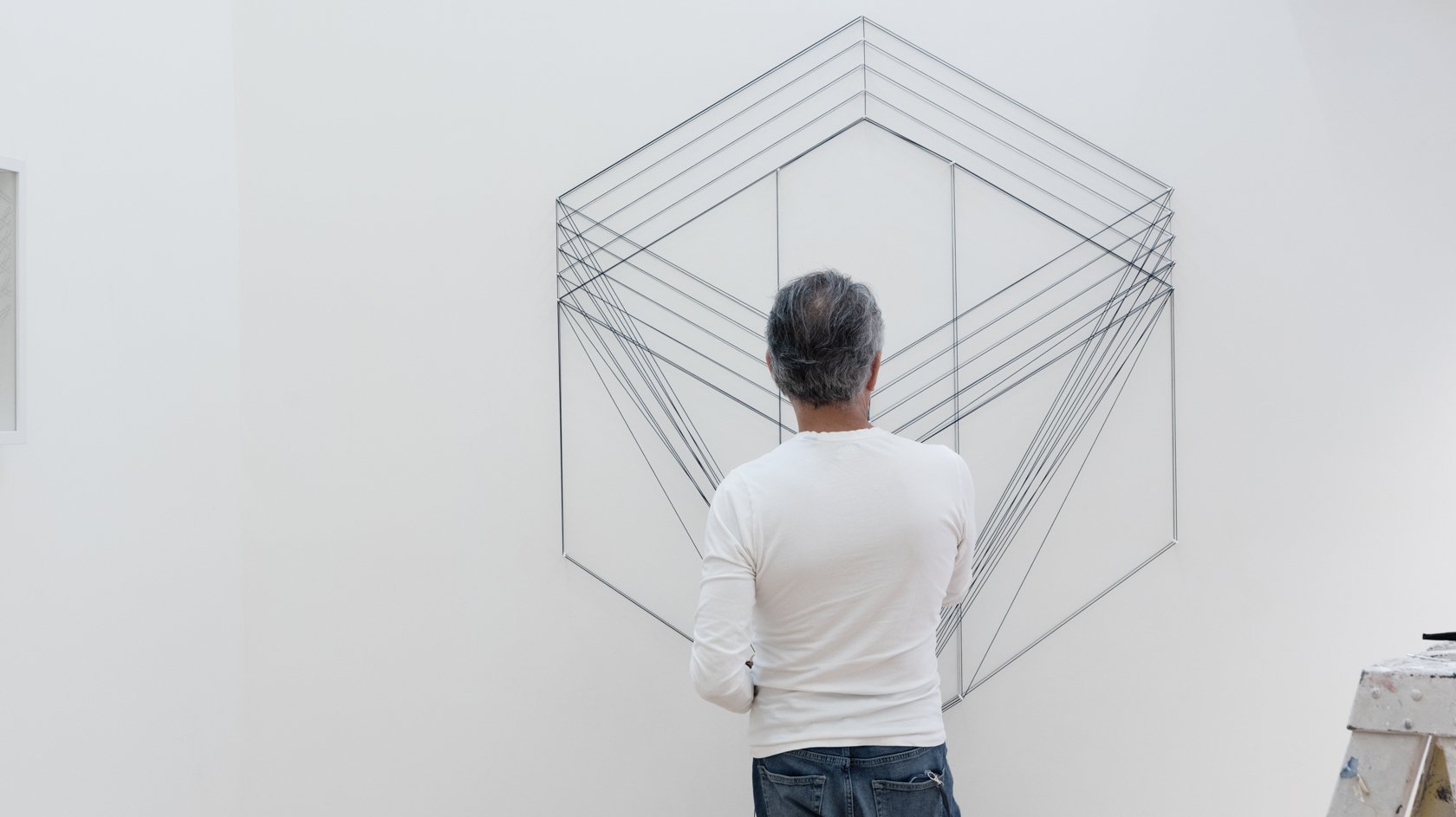
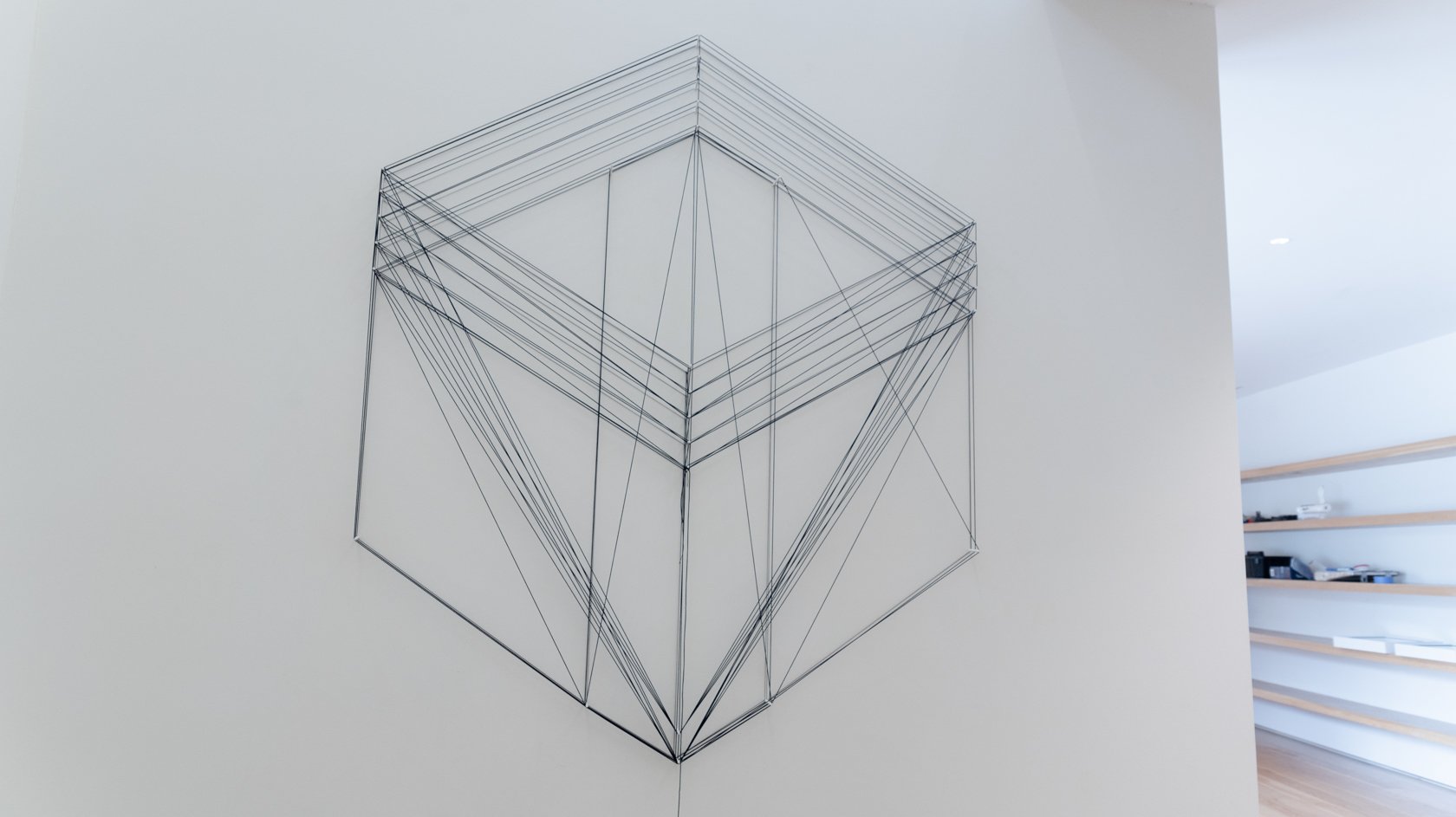

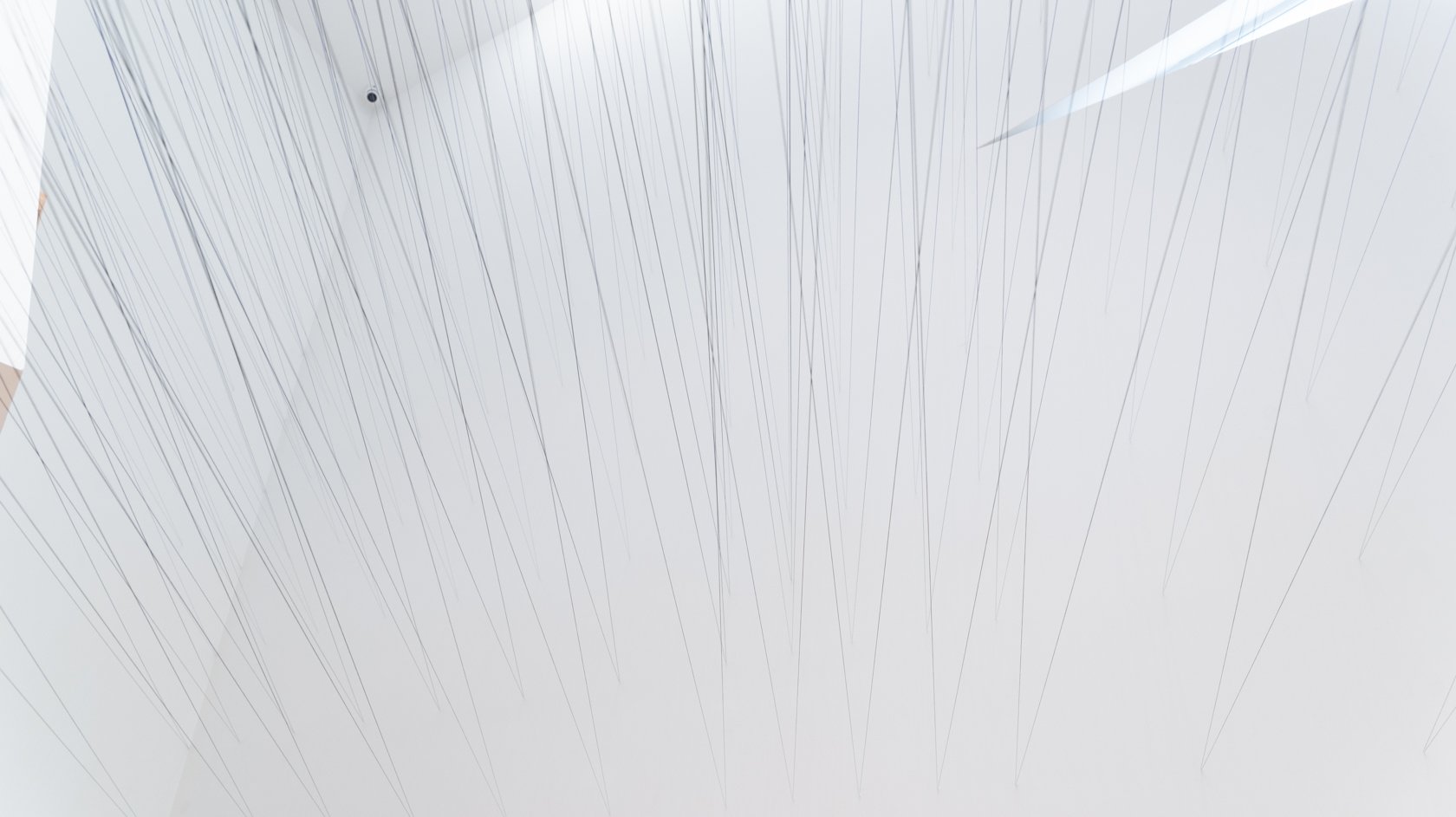
EL CONTINUUM EN EL ARTE DE MILTON BECERRA
Surpik Angelini © Febrero, 2013.
Cuando Milton Becerra se dió cuenta de que el mundo era una producción del imaginario humano, todavía era un niño impresionable y curioso, que iba feliz a ver al dentista, pues en su pueblo, la casa del dentista era un wunderkamer legendario, donde igual podías encontrar un animal disecado, como un facsímil de un cuadro de Leonardo o una colección de instrumentos quirúrgicos, telescopios, radios antiguos, souvenirs de viajes. También se asomaba tímidamente a un bar donde otro personaje que llamaban “El Niño” pintaba murales en la pared, copiando a los maestros clásicos..De modo que cuando su padre le preguntó qué quería ser cuando fuera grande, Milton le respondió, muy seguro de sí, que quería ser pintor. Sin embargo, la suerte le sonríe sólo al despertar de un prolongado coma causado por un accidente casi fatal, que le dejó quemaduras en un 80 por ciento en todo el cuerpo, al cumplir los 15 años. Sólo por recomendación médica y propuesto como terapia, el padre de Milton le concedió la oportunidad de estudiar arte en la Escuela de Artes Cristóbal Rojas de Caracas. Fue así que se produjo el verdadero cambio de piel en su vida como artista. Desde entonces, para Milton las llagas de sus viejas quemaduras son huellas borradas, transformadas, huellas más bien revelan portales a niveles de mayor conciencia en la medida que su espíritu ávido de exploración abre nuevos caminos.
La memoria cultural es importante en la obra de Becerra. La intensidad de sus exploraciones mitográficas de las milenarias culturas indígenas venezolanas marca su “poiesis” o una performatividad casi ritual al ejecutar cada pieza. Más allá de sus grandes logros formales como artista plástico visual, Becerra se fundamenta en su proceso creador como un artista del performance. Tanto sus observaciones de la naturaleza como sus acciones parecen estar dirigidas a una audiencia omnisciente en el silencio sideral, con sus astros, sus movimientos solares, sus radiaciones de luz, y esos eventos que marcan a la naturaleza o a nosotros mismos sin que nos demos cuenta de ello.
Como artista del performance, el medio fundamental de Becerra es el tiempo..el tiempo que Aristóteles llama "Aion" o el Continuum, plasmado en el espacio alegóricamente a través de un hilo contínuo: hilos, cuerdas, mecates, una viariedad de filamentos con los que Becerra hace desaparecer la gravedad de la materia, y a veces hasta su presencia óptica. Tejiendo con ellos una red de energía lumínica y fuerza física, Becerra sabe hacer levitar la piedra. Es un acto en sí que va más allá de lo simbólico, pues no se limita a designarse como evento performativo, sino a abrir nuevos portales de la conciencia, algo que precede y procede de su propio proceso creador. En el fondo, Becerra convoca e invoca el misterio que se produce en el momento que ocurre una transmutación, pues la percepción a un nivel más profundo parece ser alquímica, según el artista.
Como no existe el pasado, el presente, ni el futuro, sino el Continuum en lo temporal, el carbón ya es un diamante para quien lo contempla desde esa dimensión del umbral donde la transmutación está en su apogeo. Desde el punto de vista histórico, podemos decir que la obra de Becerra registra influjos de los descubrimientos de la cuarta dimensión de Malevich, con toda su carga mística, tan disimulada por los cronistas del Modernismo histórico.
La abstracción alegoriza la esencia de la materia como manifestación atómica, energética, lumínica, aural, sonora. El Continuum de las ondas de luz que hacen posible la visión y el registro del sonido van mano a mano, tanto en la obra de Malevich como en la de Becerra. Luego tenemos la experiencia colorítmica de los maestros del color, Carlos Cruz Diez, Alejandro Otero, artistas que, de nuevo, hacen alusiones a esa dimensión aural donde la luz y el sonido se componen y descomponen con infinitas permutaciones. Con sus “penetrables”, Jesús Soto le revela a Becerra el umbral entre lo visible y lo invisible. Pero casi sin artificios, Becerra hace desaparecer peñascos en las Amazonas, bajo el sortilegio de una lluvia de rayos prismáticos producidos por el sol y el agua.
También crea libros que atrapan en sus páginas el pasaje del tiempo, registrado a través de sutiles sombras arrojadas sobre unas piedras de canto que Becerra fotografía minuciosamente en serie cronológica estampada sobre papel...es su libro Cósmico de las Horas...Tiempo espacializado…
Recordando a Lygia Clark y a Gordon Matta Clark, invoca la interactividad e intersubjetividad de sus obras, invitando al público a participar en el despliegue de permutaciones geométricas sobre y desde el papel intervenido. Esto se ve claramente en sus finísimos dibujos, que consisten en una serie de cortes geométricos continuos, hechos sin interrupción sobre un plano de papel, que puede ser manipulado para producir figuras lúdicas de infinita variación. Son cortes quirúrgicos tan finos, que a simple vista son indiscernibles: de nuevo es el juego de lo que aparece y se desaparece..como las llagas de su piel quemada.
Becerra como Beuys, es un shamán, un ave fénix que renació de las cenizas. Pero, a diferencia de Beuys, Becerra expone las raíces profundas del mito originario de una comunidad olvidada: su comunidad natal. Su arte, al contrario de Beuys, no lo mistifica a él como individuo creador. Como todo evento mítico que persiste en el Continuum, su arte se convierte en un soporte que integra el individuo a su colectividad. Ese pasaje de lo individual, lo personal a lo colectivo es lo que convierte el arte de Milton Becerra en algo altamente poético, evocativo y transformador.
THE CONTINUUM IN THE ART OF MILTON BECERRA
Translated from Spanish by Surpik Angelini. May 2023.
When Milton Becerra realized that his perception of the world was a production of the human imagination, he was just an impresionable and curious child, who happily went to visit his dentist, because in his village, the dentist’s dwelling was a legendary wunderkamer, where you could find a dissected animal, a facsímile of a famous Leonardo painting or an entire collection of surgical tools, telescopes, antique radios, nick knacks and souvenirs of travels. Milton also peered timidly into a bar where a character called “El Niño” painted murals on the walls, copying classical masters. Thus, when Milton’s father asked him what he wanted to do when he grew up, Milton answered, very self assured, that he wanted to be a painter. However, his dream comes true only as he woke up after a prolonged coma caused by a near fatal accident, which left him with 80% burns all over his body, when he was only 15 years old. Because his physician proposed it as part of a medical therapy, Milton’s father agreed to allow him to study art in the Escuela de Artes Cristóbal Rojas de Caracas. It was then that a truly transformative graft occurred in Milton’s life as an artist. Since then, as his old burned scars left disappearing traces, they opened new portals to a higher consciousness, in tándem with new paths revealed by Milton’s avid spirit of exploration.
Cultural memory is essential in Becerra’s oeuvre. The intensity of his mythographic explorations of millenial indigenous cultures in Venezuela marks his “poiesis” and a performative process that is ritual each time he executes a work. Beyond his formal accomplishments as a visual artist, Becerra seems to be grounded as a performance artist in his creative process. Both his keen observations of nature as well as his actions seem to be directed to the omniscient presence of a silent sideral world, with its astral bodies, its solar movements, its radiating light, and all those events that mark nature and ourselves even though we may be unaware of them.
As a performance artist, Becerra’s fundamental media is time, the notion of time Aristotle calls “Aion” or the Continuum, which the artist allegorically expresses in space using a continuous line, made out of thread, chord, rope or a variety of filaments Becerra employs to make the gravity of matter disappear, and at times, even its optical presence. Weaving with them a web of luminous energy and physical force, Becerra knows how to make stones and boulders levitate. It is an act that transcends symbolism, since it does not limit itself to designate performative events, but opens new portals of awareness in the viewer, something that precedes and procedes from the artist’s own creative process. In the end, Becerra summons and invokes the mystery of the moment when a transmutation occurs, since a more profound level of perception always seems to be alchemical in nature, according to the artist.
Since the past, present or future no longer exist in the Continuum, charcoal is already a diamond for the one that contemplates it from a threshold where transmutation is in its ápex.
From a historical point of view, we may say that Becerra’s oeuvre registers the influx of Malevich’s discovery of the fourth dimensión, with all its mystical charge, so disguised by the chroniclers of historical Modernism.
Abstraction allegorizes the essence of matter as an atomic, energetic, luminic, aural and sonorous manifestation. As a Continuum of vibrations, light waves making vision and sound registration possible go hand in hand, in Malevich’s as well as in Becerra’s work. We also have the “colorhythmic” experience of masters of color, such as in Carlos Cruz Diez’s and Alejandro Otero’s work, artists that allude to that aural dimension where light and sound can be composed and decomposed in infinite permutations. With his Penetrables, Jesus Soto also reveals the threshold between the visible and the invisible to Becerra. But almost without artifice, Becerra makes boulders disappear in the Amazons through the sortilege of a spray of prismatic rays produced by the sun and water.
The artist also creates books that catch the passage of time in its pages, registered through subtle shadows projected on river stones Becerra photographs them methodically in a chronological series printed on paper.. It is a Cosmic Book of Hours, spatialized time…
Recalling Lygia Clark and Gordon Matta Clark, Becerra invokes the interactivity and intersubjectivity of the work of art, inviting the public to participate in the unfolding of geometric permutations on and from the paper. We can see this clearly in his fine drawings, which consist in a series of continuous geometric cuts, done without interrumption on a plane of paper, which can be manipulated to produce playful figures of infinite variation. Its surgical cuts are so fine that they are visually indiscernible: it is again, a play between what appears and disappears… evoking the burnt traces on his skin.
Becerra, like Beuys, is a kind of shaman, a Phoenix, who was reborn from the ashes. But, in contrast to Beuys, Becerra exposes the roots of the originary myth of a forgotten ancestral community: his own. His art, contrary to Beuys, does not mystify him as a creator. As in every mythical event that persists in the Continuum, Becerra’s art is a supporting link integrating the individual to his community. This rare, and sought-after passage from the personal to the collective is what makes Milton Becerra’s work something significantly poetic, evocative and transformative.
Download PDF Here
Photo by Beatriz Bellorín
Photo by Beatriz Bellorín
Photo by Beatriz Bellorín
Photo by Beatriz Bellorín
Photo by Beatriz Bellorín
Photo by Beatriz Bellorín
Photo by Beatriz Bellorín
Download PDF Here
Photo by Beatriz Bellorín
ACKNOWLEDGEMENTS
The Transart Foundation and Surpik Angelini are deeply grateful to Mari Carmen Ramirez for her superb contribution to the present exhibition “Milton Becerra: Kinetic Webs” as curator of Becerra’s work, after visiting his studio in Paris in 2018. It has been a great honor and pleasure to closely observe Mari Carmen's exquisite process in selecting and installing Becerra’s series of 41 early -never exhibited- 1970’s drawings titled “Hexagonometrias,” evidencing the close relationship between the drawings and the kinetic web installations he is internationally known for, also seen in Transart’s current exhibition.
The Transart Foundation also wishes to acknowledge the excellent technical assistance of Carlos Pelayo Martinez and Matthew Sullivan in helping Milton Becerra install his kinetic web in our Main Gallery.
We also wish to thank artists Carolina Otero, Zulma Vega, Lorena Morales and Rosibel Ramirez for their generous assistance in framing Becerra’s series of Hexagonometrias, exhibited in our Media Gallery.
The exhibition is open for visitors by appointment only, from Wednesday through Saturday through December 15, 2023. Please contact Surpik Angelini at Surpik@mac.com


